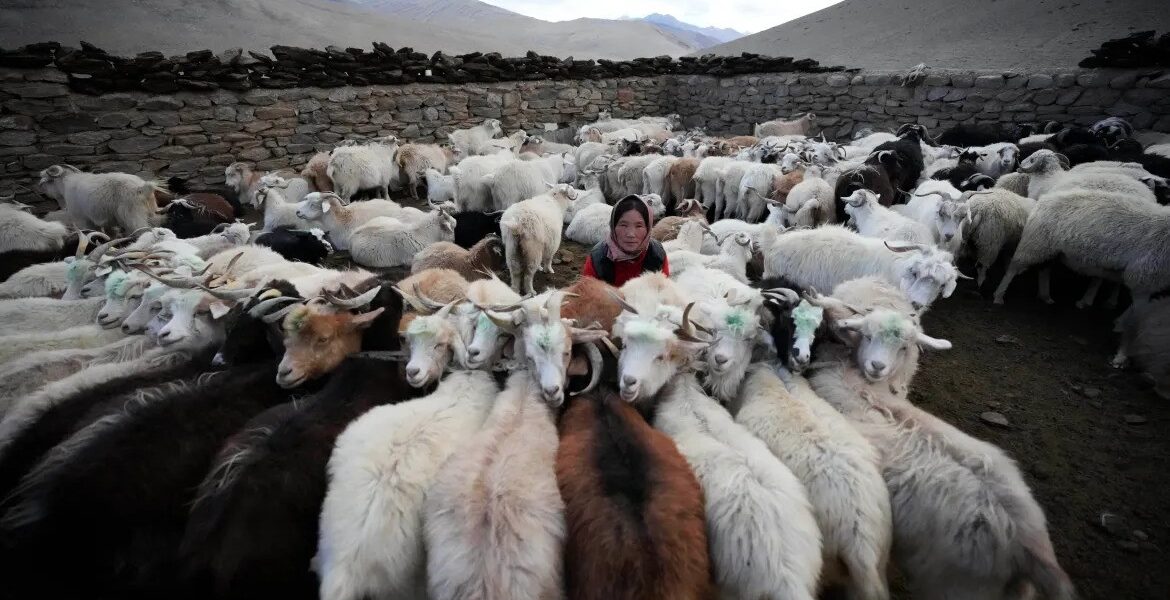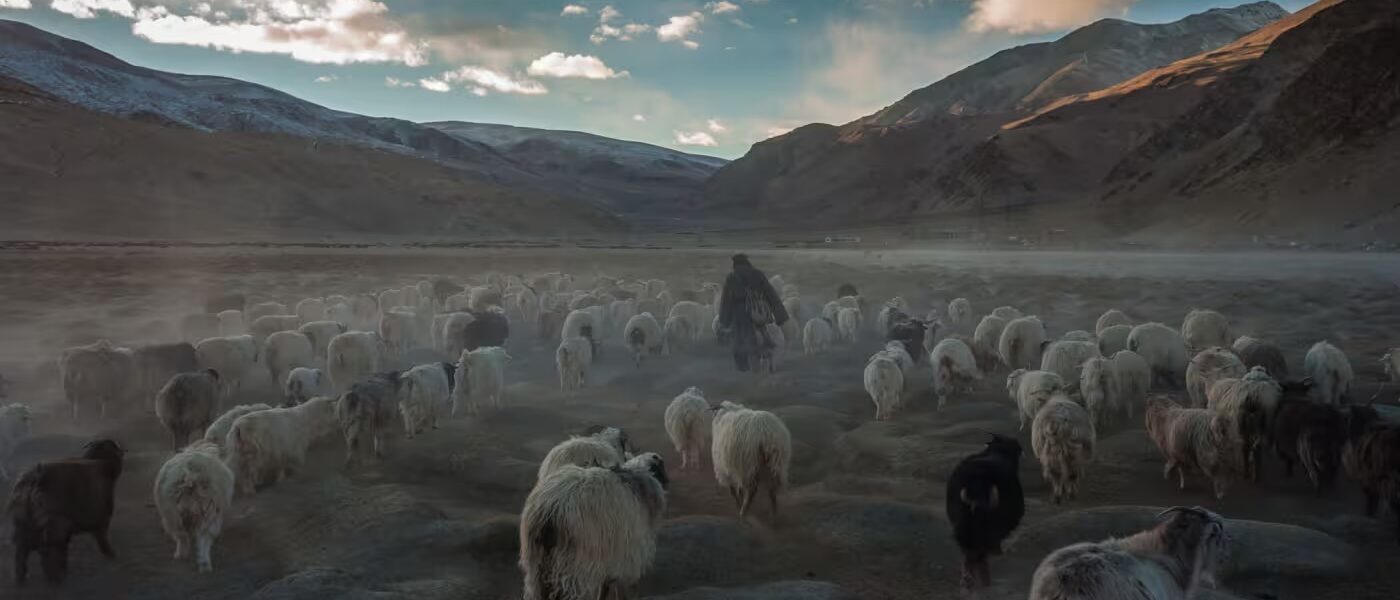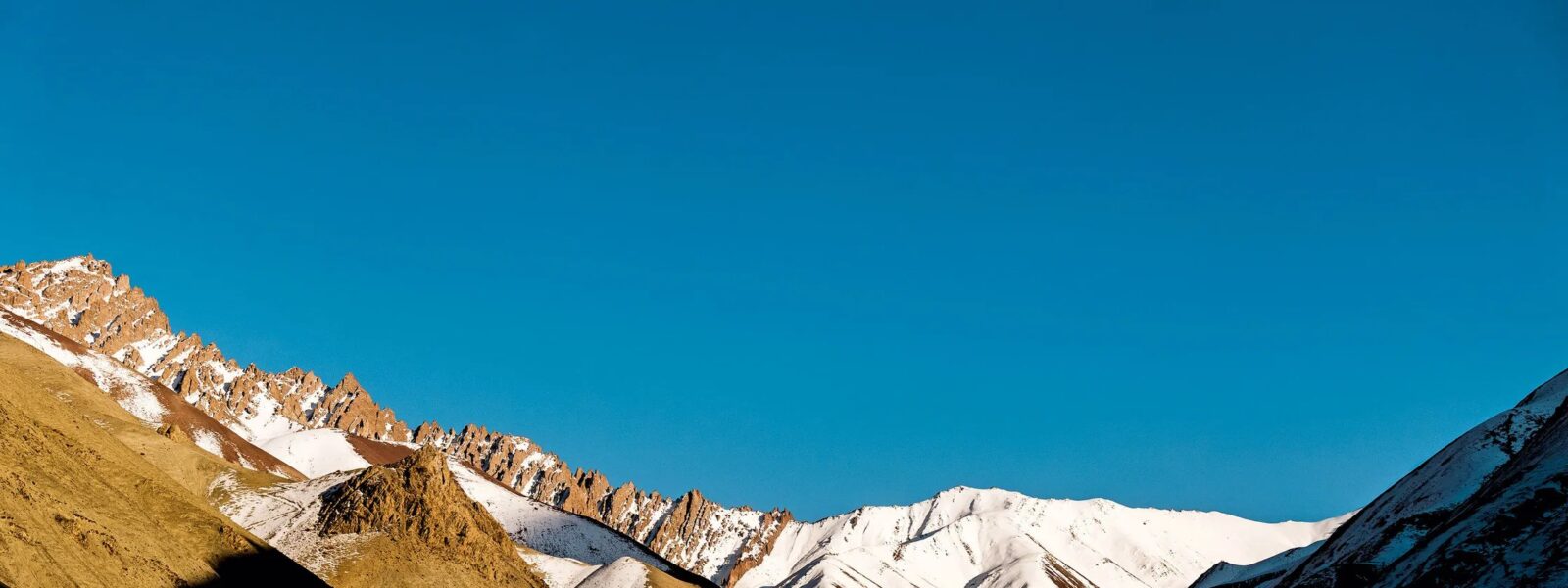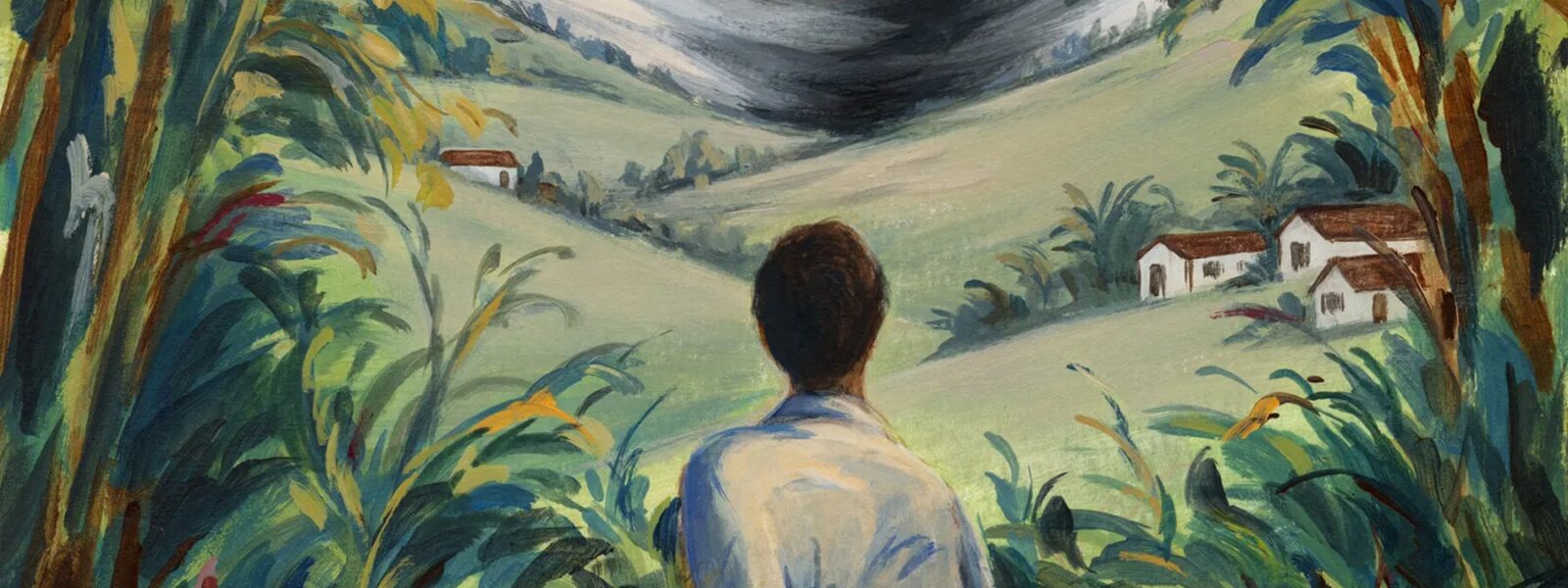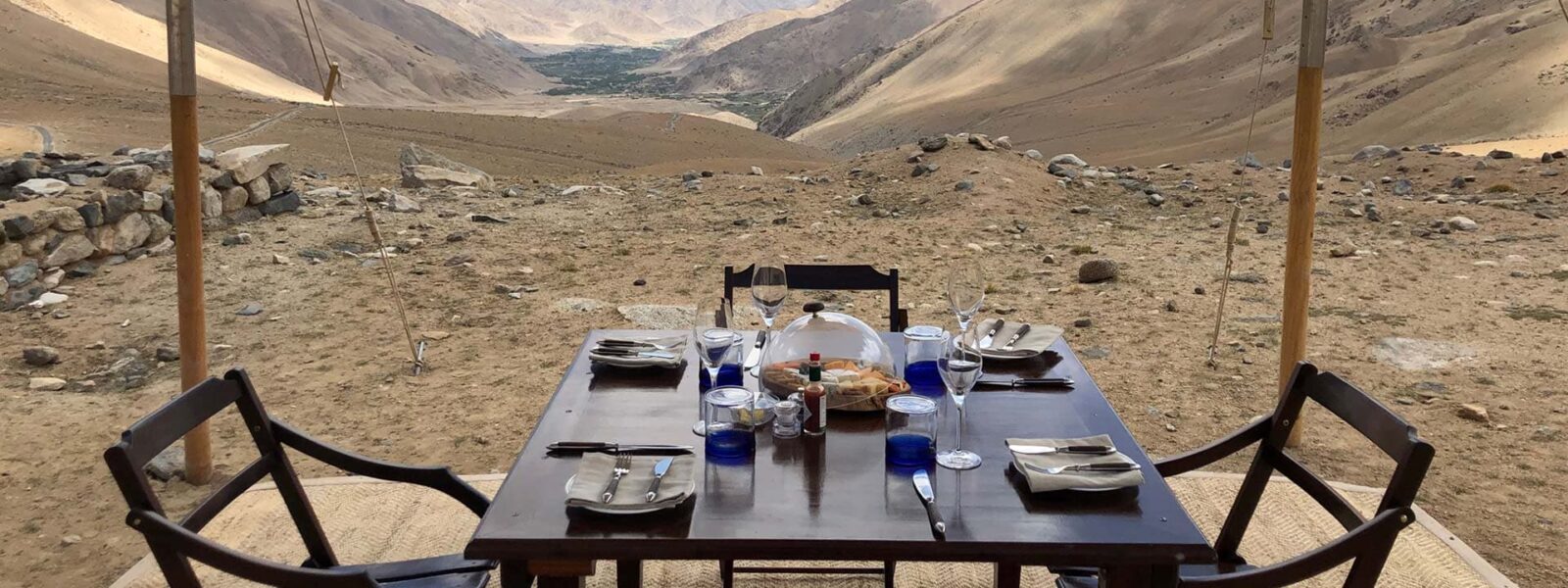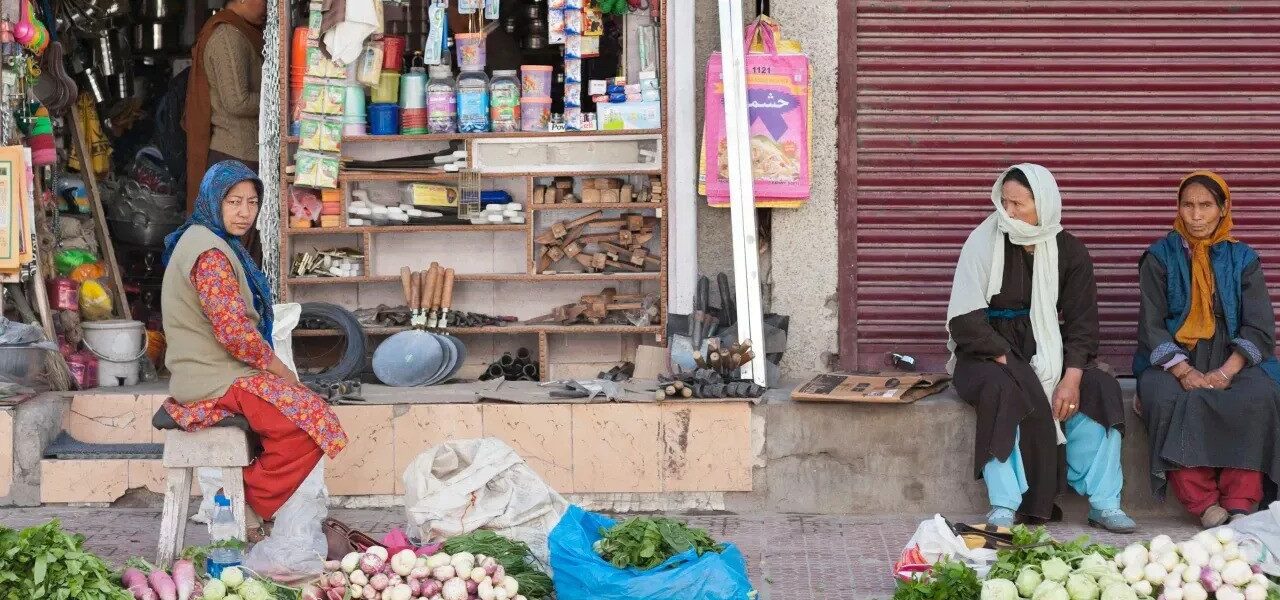Introduction: The Sacred Land of Ladakh
High in the Indian Himalayas, nestled between the Karakoram and Zanskar ranges, lies a land of silent peaks, sapphire skies, and age-old whispers of prayer flags fluttering in the wind. Ladakh is more than just a destination — it is a spiritual geography where every valley cradles a monastery, every rock face guards a gompa, and every village echoes with the rhythm of Buddhist chants.
For centuries, Ladakh has stood as a bridge between ancient Tibet and the Indian subcontinent, shaped by harsh altitudes and resilient cultures. Among its most defining features are the hundreds of Buddhist monasteries that dot its stark, dramatic landscape. Some are monumental and famous, like Hemis and Thiksey, welcoming thousands of pilgrims and travelers each year. Others are nearly invisible to the untrained eye — small, weathered hermitages clinging to cliffsides or hidden in high-altitude valleys that feel untouched by time.
This guide is your complete companion to discovering them all — from iconic gompas perched on ridgelines to forgotten sanctuaries tucked behind mountain passes. Whether you’re a spiritual seeker, a cultural explorer, or a curious traveler with a camera and a notebook, Ladakh’s monasteries promise not just history and architecture, but an experience of stillness and awe that transcends religion and borders.
In this guide, you’ll find an extensive regional breakdown of Ladakh’s monasteries, including those in Leh, Nubra Valley, Sham Valley, Zanskar, Changthang, and Kargil. Each chapter is organized by geography and accessibility, with highlights of festivals, spiritual practices, architectural features, and travel logistics. But more than just facts, this is an invitation — to wander beyond the obvious, to breathe deeply in high-altitude silence, and to meet the timeless rhythm of Himalayan Buddhism face to face.
Monasteries in Ladakh are not museum pieces frozen in time. They are living centers of spiritual life — homes to monks and nuns, schools of Buddhist philosophy, and sacred sites of vibrant local culture. Many welcome visitors warmly, offering glimpses into their sacred rituals, libraries of ancient texts, and even rooms for those who wish to stay longer and reflect. Others require a more intrepid spirit, a sense of adventure, and sometimes a few hours’ trek to reach. But all of them share one thing: a sense of the eternal.
So let us begin. The journey starts here, where altitude meets ancestry — and where the monasteries of Ladakh await your quiet footfall and open heart.
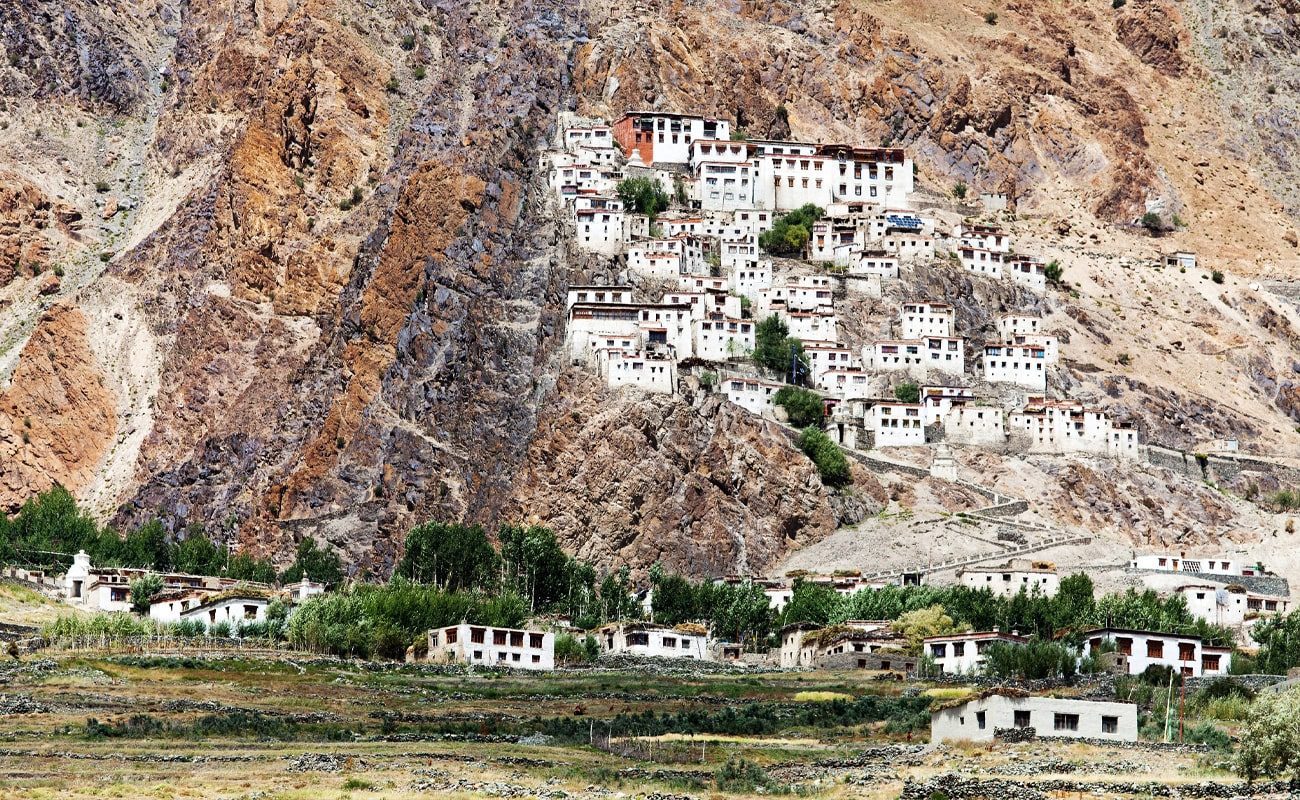
Quick Overview of Buddhism in Ladakh
To understand the soul of Ladakh, one must first understand the living pulse of Tibetan Buddhism that runs through its people, mountains, and monasteries. Here, religion is not confined to temples or rituals — it spills into daily life, travel routes, and the landscape itself. The fluttering of prayer flags atop a mountain pass, the slow spin of a prayer wheel by a village elder, or the distant echo of a monk’s horn at dawn — these are not just traditions, they are reminders that you are walking through a sacred geography shaped by faith and resilience.
Buddhism arrived in Ladakh as early as the 2nd century, but it flourished in full color during the 10th to 15th centuries, when monasteries were built across the region with royal patronage and spiritual purpose. Influenced by the broader Mahayana tradition and rooted in the Vajrayana school, Ladakh’s monastic system evolved under four major Tibetan Buddhist lineages: Gelug, Nyingma, Sakya, and Drukpa-Kagyu. Each lineage brought unique teachings, rituals, monastic customs, and architectural styles that still distinguish the gompas of today.
The Gelugpa (Yellow Hat) tradition is perhaps the most widespread in Ladakh, with grand monasteries like Thiksey and Spituk following its teachings. This school emphasizes monastic discipline and scholarly study, and it traces its spiritual leadership to the Dalai Lama. Meanwhile, the Nyingma (Ancient) school, the oldest of all Tibetan lineages, can be found in places like Takthok Monastery, known for its cave meditation sites and Tantric rituals. The Kagyu lineage, with its focus on meditative practice and transmission from master to disciple, is strong in areas like Hemis, the wealthiest and one of the most spiritually vibrant gompas in Ladakh.
What makes Ladakhi Buddhism distinct is not just its doctrinal background but its integration with the landscape and daily life. Many monasteries are built in natural harmony with their surroundings — carved into cliffs, built atop rocky spires, or nestled in quiet river valleys. These spiritual centers often serve multiple purposes: they are schools for young novices, places of worship, community gathering spots, and guardians of ancient manuscripts and sacred art.
Every monastery in Ladakh is a microcosm — a self-contained world of prayer halls, meditation caves, butter lamps, thanka paintings, and monks in crimson robes. Together, they form a spiritual network that connects villages and valleys, ancient texts and present-day seekers. Understanding this web of monasticism helps you not only navigate your journey through Ladakh’s sacred spaces, but also to grasp the spiritual heritage that continues to shape its identity in the modern world.
Before diving into the specific regions and monasteries, take this moment to ground your journey in the context of faith. Because in Ladakh, every path leads not just to a destination — but to a deeper encounter with wisdom, silence, and presence.
Monasteries in Leh & Surroundings
Leh, the capital of Ladakh, is more than just a gateway to high mountain passes and desert valleys — it is a living museum of Tibetan Buddhist heritage. Within a short drive or even walking distance from the bustling main bazaar, travelers can find some of the most spiritually significant and visually stunning monasteries in all of Ladakh. This region is ideal for those seeking to explore Buddhist temples without venturing too far from the comforts of Leh town, making it the perfect starting point for your monastic journey.
Thiksey Monastery stands as a crown jewel among Leh’s spiritual landmarks. Perched atop a hill just 19 kilometers from town, it is often compared to the Potala Palace in Lhasa for its tiered structure and commanding presence. The highlight here is the massive 15-meter-high statue of Maitreya Buddha, housed in a beautiful temple hall. Thiksey belongs to the Gelugpa (Yellow Hat) sect and is active with resident monks, morning prayers, and vibrant festivals. Arriving at sunrise, when the chants begin and the Indus valley is bathed in golden light, is an experience not easily forgotten.

Just a few kilometers before Thiksey lies Shey Monastery and Palace, once the summer capital of Ladakh’s royal family. The complex is famed for its giant copper-gilded statue of Shakyamuni Buddha, one of the largest in the region. While partially in ruins, Shey still holds a timeless charm, and walking its corridors offers a contemplative experience in the quiet wind.
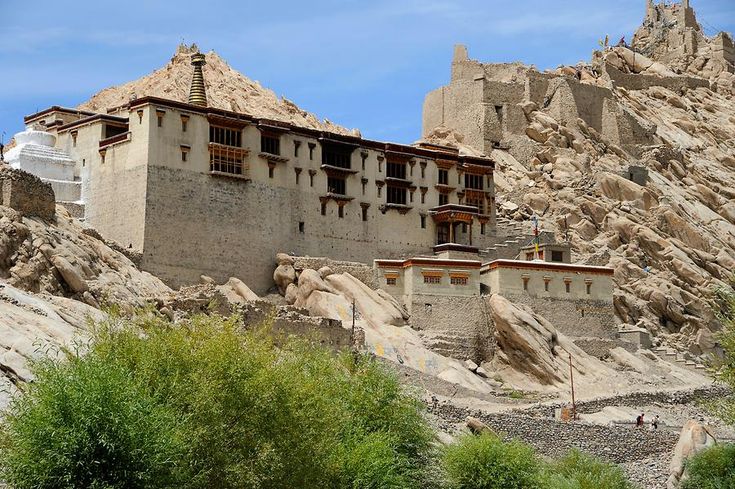
Closer to the airport and perched on a hill is Spituk Monastery, known for its sweeping views of Leh, the Indus River, and the surrounding desert. It houses a fascinating collection of Buddhist artifacts and statues, and hosts the annual Gustor Festival, featuring masked Cham dances and traditional rituals. A hidden temple upstairs, devoted to wrathful deities, is only open during the festival days — offering a unique glimpse into esoteric practices.
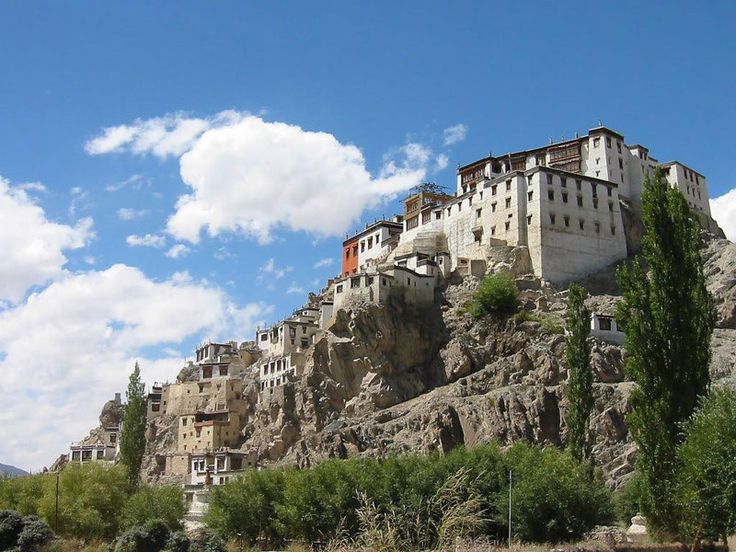
Other notable gompas in the vicinity include Stakna Monastery, set dramatically on a rocky outcrop over the Indus River with a distinctive stupa-like tower, and Matho Monastery, famous for its oracles and the unique Matho Nagrang Festival where monks go into trances to deliver prophecies. Phyang Monastery, located about 17 kilometers west of Leh, is often overlooked but boasts an impressive main temple and a quieter, less-touristed environment.
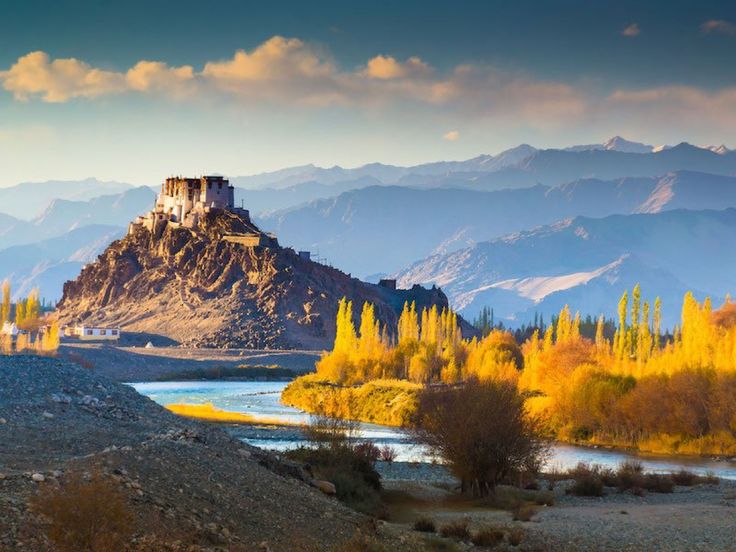
Within Leh town itself, travelers can visit Sankar Gompa, a small but serene monastery ideal for evening visits, and the Chokhang Vihara Temple in the heart of Leh’s old bazaar, where local devotees come daily to offer prayers. Overlooking the city is the Namgyal Tsemo Gompa and Fort complex, an iconic symbol of Leh with breathtaking panoramic views and a rich royal history.
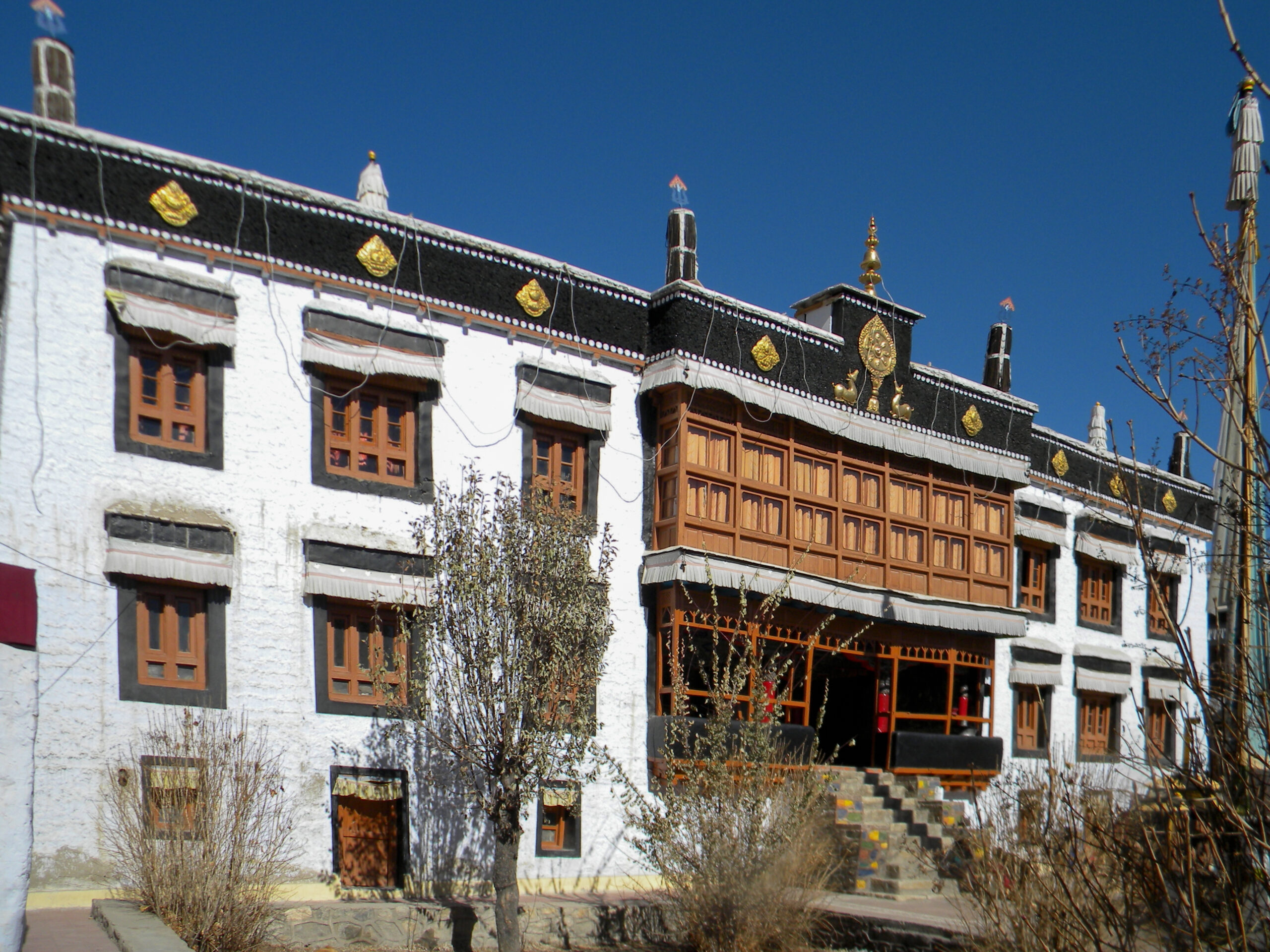
Whether you are walking between gompas or taking short day trips from Leh, this region provides the ideal introduction to Ladakh’s monastic world — one that is accessible, awe-inspiring, and deeply spiritual. If your time in Ladakh is short, the monasteries around Leh are the perfect window into the heart of Himalayan Buddhism.
Monasteries in Nubra Valley
Beyond the lofty Khardung La pass — one of the highest motorable roads in the world — lies Nubra Valley, a landscape of soft dunes, double-humped camels, and green oasis villages bordered by snow-capped peaks. While many visitors come here for the scenery, few realize that Nubra is also home to some of Ladakh’s most visually arresting and spiritually resonant monasteries. The monasteries of Nubra blend high-desert silence with enduring Tibetan traditions, offering both popular landmarks and remote hermitages for the patient traveler.
The most iconic monastery in Nubra is Diskit Monastery, dramatically perched above the village of Diskit. Overlooking the Shyok River and the surrounding desert landscape, it is the oldest and largest monastery in the valley, founded in the 14th century. It belongs to the Gelugpa lineage and houses an impressive collection of thangkas, murals, and ancient scriptures. The highlight, however, is the colossal 32-meter statue of Maitreya Buddha nearby — a recent addition that has become the spiritual emblem of Nubra Valley. The views from this platform are breathtaking, especially at sunrise and sunset, when the mountains catch fire with golden light.

Further north, in the tranquil village of Sumur, lies Samstanling Monastery, another important center of Gelugpa teachings. Surrounded by poplar trees and fields of barley, this monastery is home to over 50 monks and has a distinctly peaceful atmosphere. Its prayer halls are filled with vivid murals, and the daily rhythm of chants and ceremonies offers a calming contrast to the tourist bustle found elsewhere. Samstanling is easily accessible by road and is a perfect stop en route to Panamik hot springs.
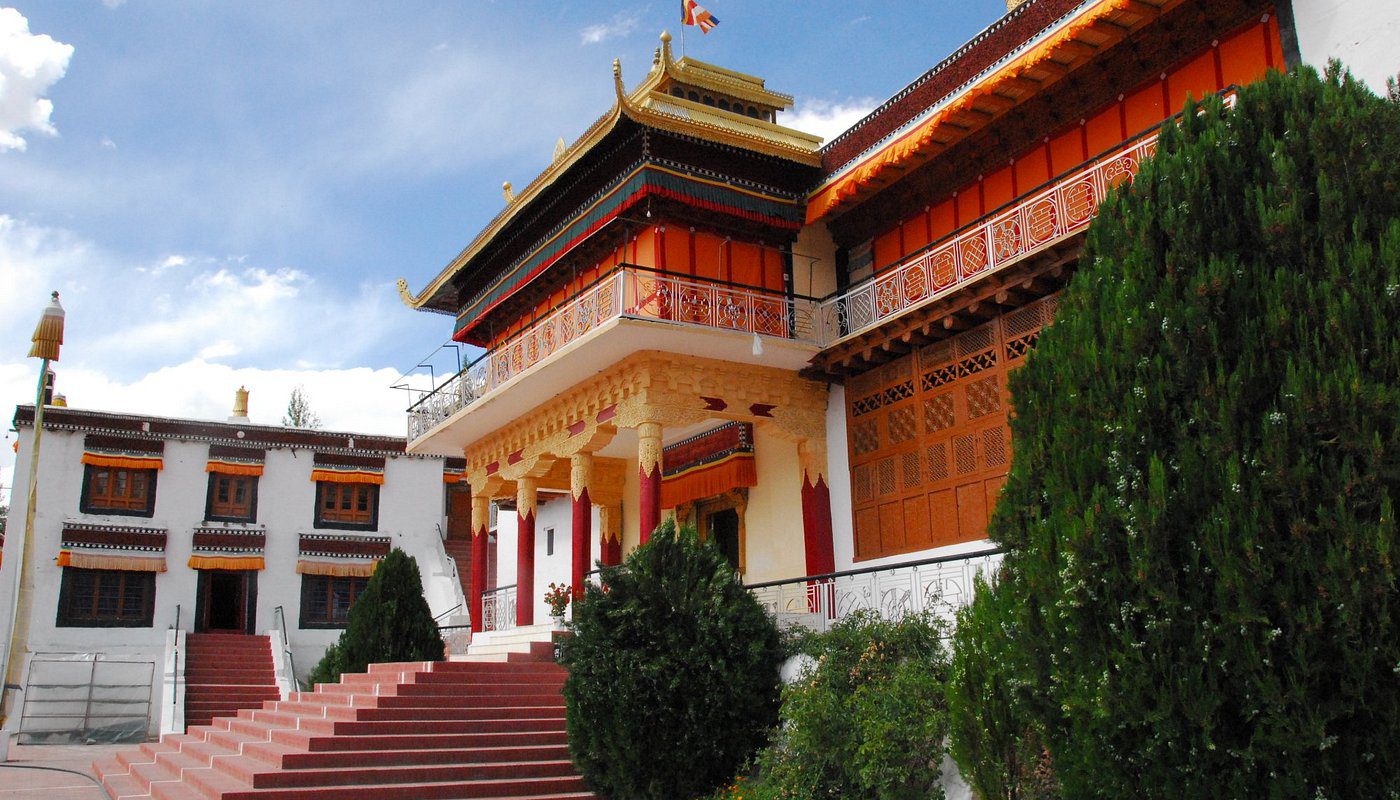
For those who enjoy exploring off-the-beaten-path, Ensa Monastery offers a unique reward. This ancient gompa is built into the rocky cliffs above the Nubra River and can only be reached via a short but steep hike. It’s known for its isolation and meditation caves, where monks and spiritual seekers have retreated for centuries. The views from Ensa are expansive, and its untouched vibe makes it one of Nubra’s most intimate spiritual sites.
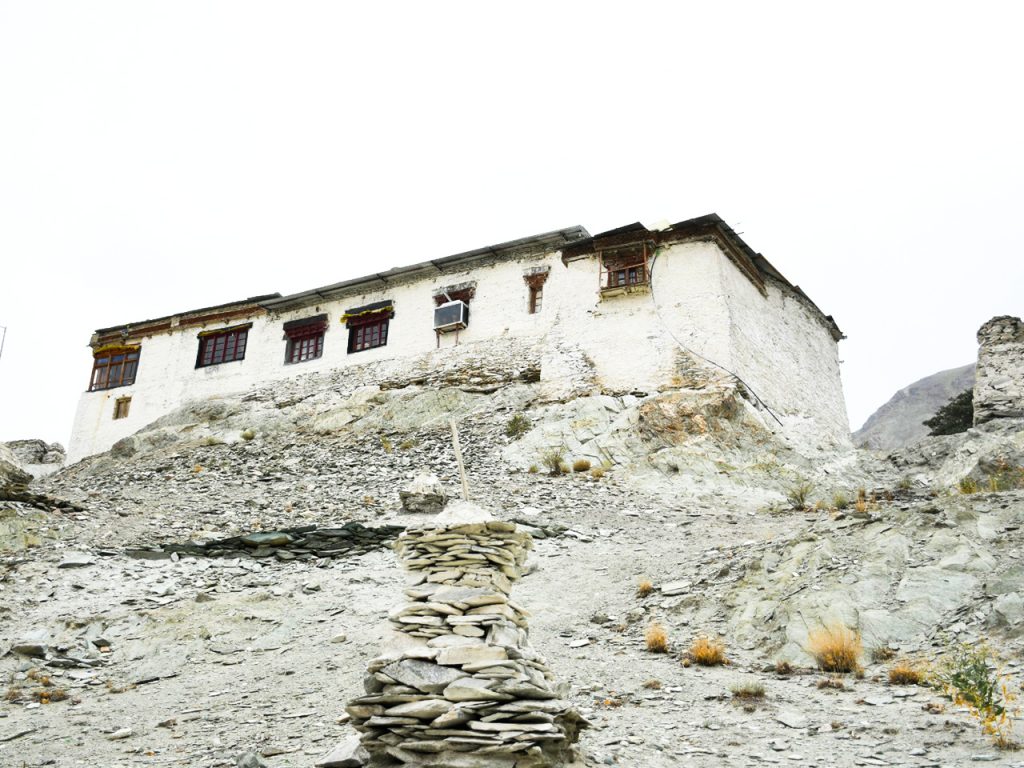
Other lesser-known monasteries in Nubra include Yarma Gonbo Monastery, located near Panamik and considered a local center of devotion, as well as the tiny Charasa Monastery, which sits across the river and is known for its ancient murals and quiet ambiance. In Turtuk, the last village before the Pakistan border, visitors can find a small but beautiful Buddhist gompa tucked behind apricot orchards — a peaceful reminder of the multi-ethnic and spiritual diversity of this frontier village.
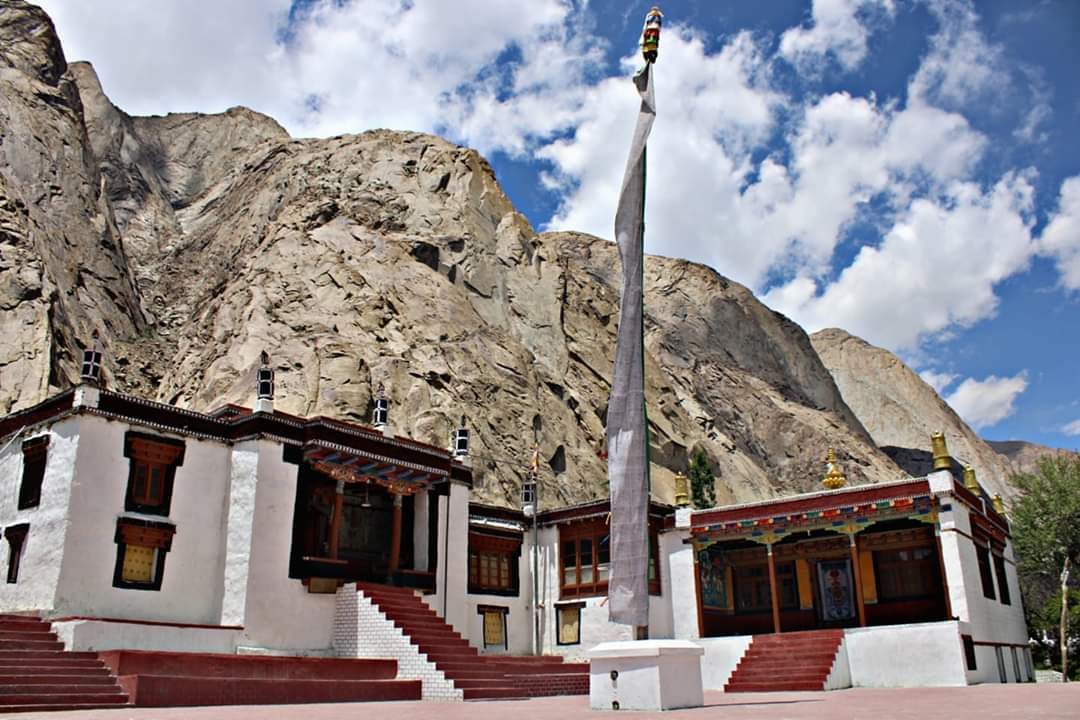
Nubra’s monasteries are fewer in number compared to Leh or Zanskar, but they more than make up for it in setting, solitude, and soul. Here, the road may be rough, but the reward is a deeper connection — to the land, its people, and the enduring presence of Buddhism in Ladakh’s farthest corners.
Monasteries in Sham Valley (Lower Indus)
As the Indus River carves its path westward from Leh, it carries not just glacial meltwater but also the memory of Ladakh’s earliest Buddhist heritage. Known as Sham Valley or the “Lower Indus Valley,” this region is home to some of the oldest and most artistically rich monasteries in Ladakh. These gompas are treasured not for their grand scale but for their deep history, ancient murals, and serene village settings that invite slow, intentional travel.
The crown jewel of this region is undoubtedly Alchi Monastery, located about 66 kilometers west of Leh. Unlike most Ladakhi monasteries perched on cliffs or hills, Alchi sits humbly on the riverbank — but within its walls lies a treasure trove of Indo-Tibetan Buddhist art. Believed to date back to the 11th century, the Alchi complex is one of the oldest in Ladakh and includes five temples with stunning wall paintings, statues, and wood carvings. The intricate details of Bodhisattvas, celestial dancers, and cosmic mandalas reflect Kashmiri influences and are considered masterpieces of Himalayan sacred art. Photography inside is not permitted — not just to preserve the art, but to encourage visitors to absorb it fully with their eyes and hearts.
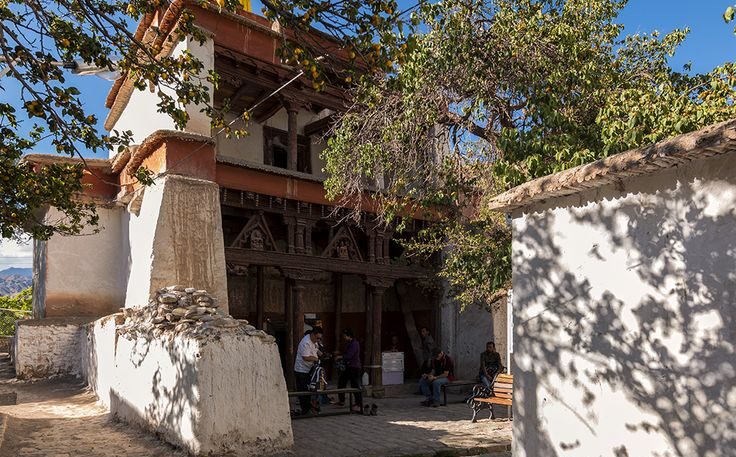
Not far from Alchi lies Mangyu Monastery, a lesser-known gem often overlooked by casual travelers. Its twin temples and ancient stupas are surrounded by silence, with the occasional sound of cowbells and wind in the barley fields. Like Alchi, Mangyu preserves some of Ladakh’s oldest paintings, and its spiritual energy is palpable despite its modest size.

Further west, tucked in a hidden side valley, is Sumda Chun Monastery, accessible by foot or a rugged 4×4 route. Recognized by UNESCO for its cultural value, Sumda Chun is famous for its 11th-century statues and murals that have survived centuries of isolation. This monastery is a true pilgrimage for lovers of Buddhist art and offbeat travel, offering a glimpse into a time when Buddhism first took root in the Himalayas.

The region is also home to Likir Monastery, a more active and expansive gompa located just off the main road. Built in the 11th century and later expanded under the Gelugpa order, Likir houses a large golden statue of Maitreya Buddha and is a working monastery with many young monks. Its location on a ridge offers sweeping views of the valley, and it is often included on day-trip circuits from Leh.
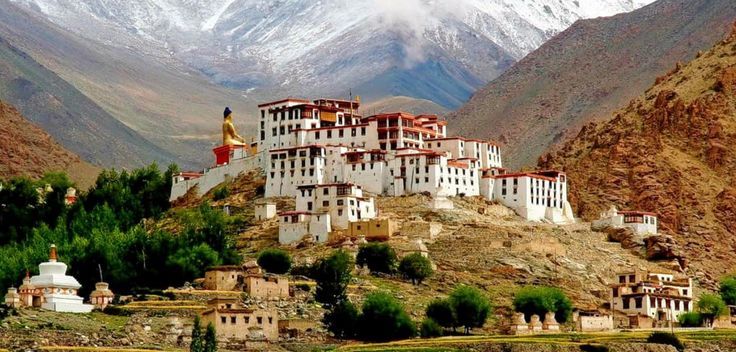
For travelers seeking seclusion, Rizong Monastery is a must. Often referred to as the “Paradise for Meditation,” Rizong sits in a narrow canyon and is known for its strict discipline and silent environment. It has no electricity, no distractions, and very few visitors — making it one of the most authentic places to experience monastic solitude. Nearby, the Julichan Nunnery provides rare insight into the lives of Ladakhi Buddhist nuns, a lesser-seen but vital part of the spiritual landscape.
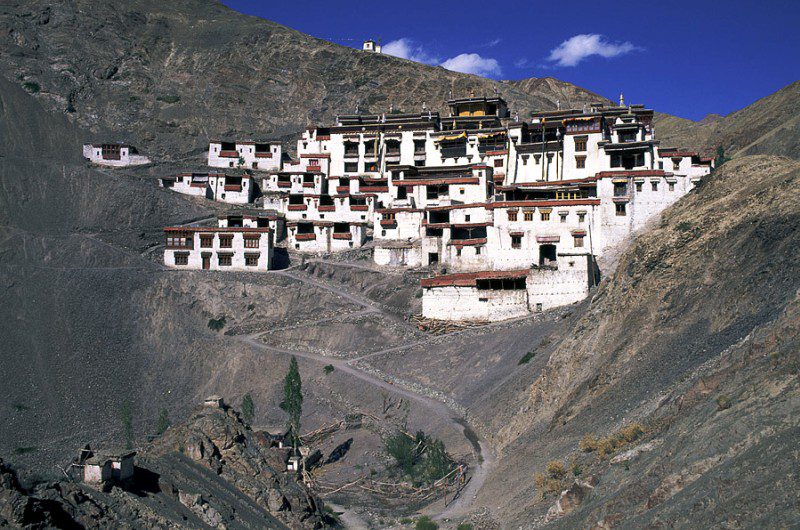
Other smaller temples and monasteries dot the Sham Valley, including Basgo Monastery, known for its fortress-like ruins and giant Maitreya statues, and Saspotse Gompa, a little-known site with colorful murals and friendly resident monks. Each of these places tells a chapter of Ladakh’s Buddhist evolution — from its early Kashmiri roots to its embrace of the Tibetan monastic system.
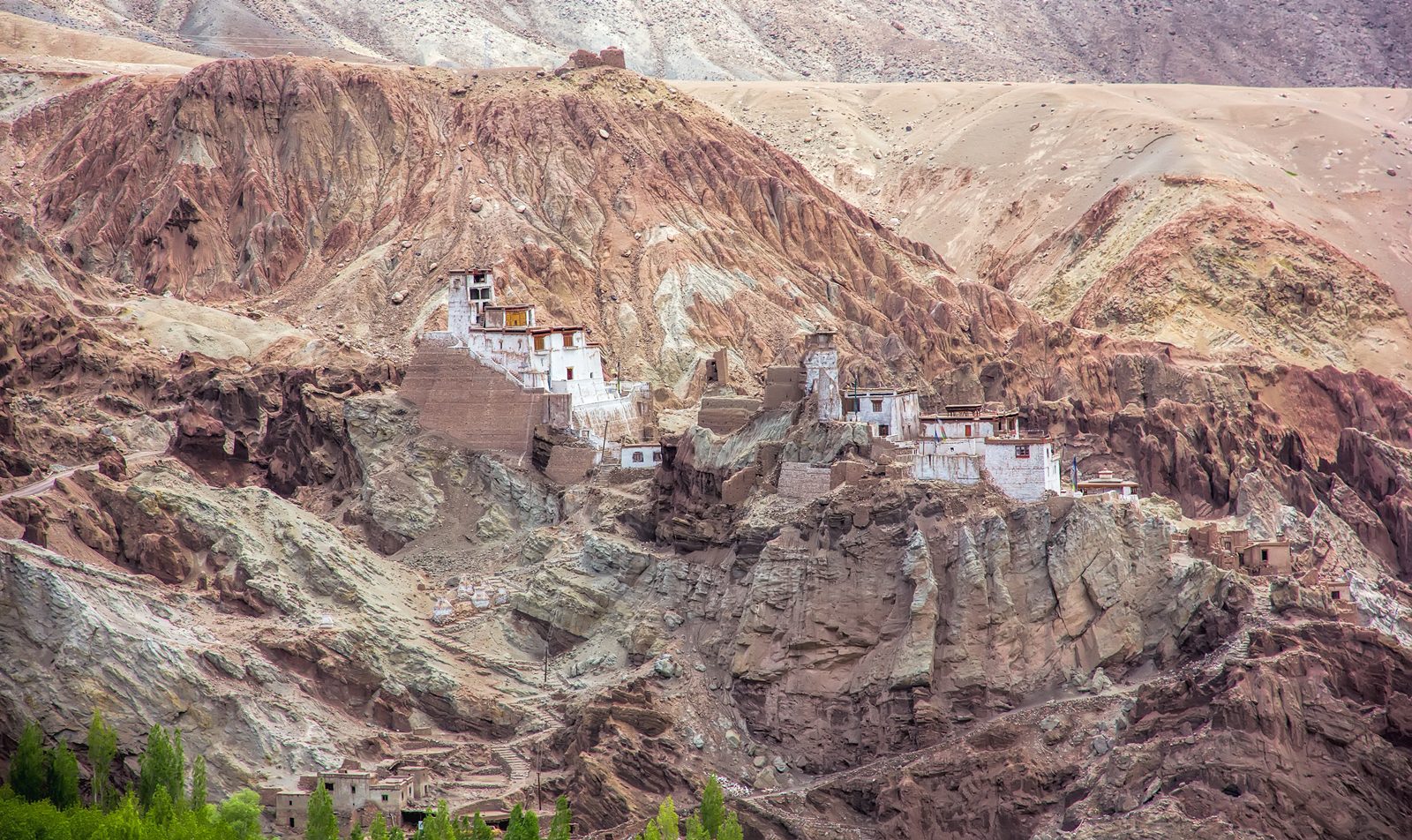
Sham Valley rewards travelers who slow down. The roads may be smooth and paved, but the true journey lies in taking your time — to read the painted walls, to watch butter lamps flicker in dusty altars, and to feel the stillness that has remained unchanged for nearly a thousand years.
Monasteries in Zanskar Valley
Zanskar Valley feels like a land lost in time — a remote and rugged kingdom of snow-capped peaks, glacial rivers, and ancient footpaths. Reached via long and often dramatic journeys, it rewards the determined traveler with some of the most spectacular and spiritually powerful monasteries in Ladakh. The gompas of Zanskar are not just places of worship — they are fortresses of silence and devotion perched on the edge of the world.
The most iconic among them is undoubtedly Phugtal Monastery, one of the most astonishing spiritual sites in the entire Himalayan region. Built around a natural cave on a cliffside above the Tsarap River, Phugtal looks like it was carved straight out of the mountain itself. It is home to over 70 monks and is accessible only by foot — a two-day trek from the nearest road. Its isolation is part of its power. Phugtal is believed to have been visited by ancient sages, and even today, it is a sanctuary for deep meditation and simple monastic life. Visitors who make the journey are rewarded with timeless silence, breathtaking views, and the humbling hospitality of the monks who reside there.
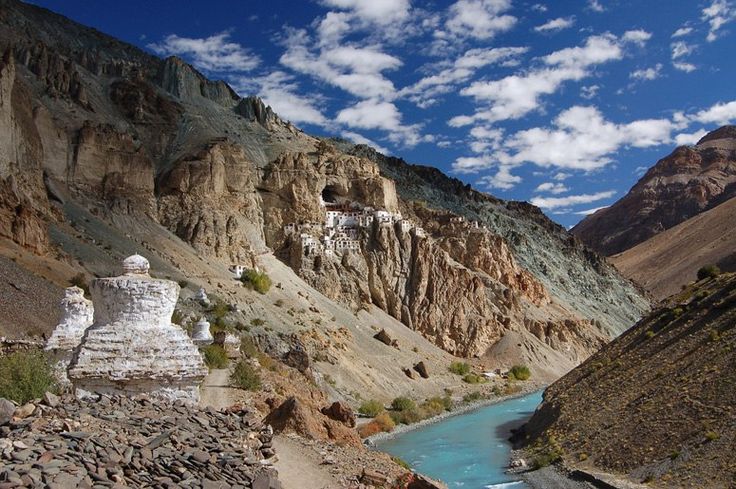
Closer to the town of Padum, the capital of Zanskar, lies Karsha Monastery, the largest and most influential gompa in the region. Built along a steep hillside, it houses over 100 monks and features a labyrinth of whitewashed buildings, prayer halls, and meditation rooms. Founded by the great translator Phagspa Sherab in the 11th century, Karsha belongs to the Gelugpa order and is known for its annual Gustor Festival, which draws people from across the valley for its vibrant masked dances and sacred rituals.
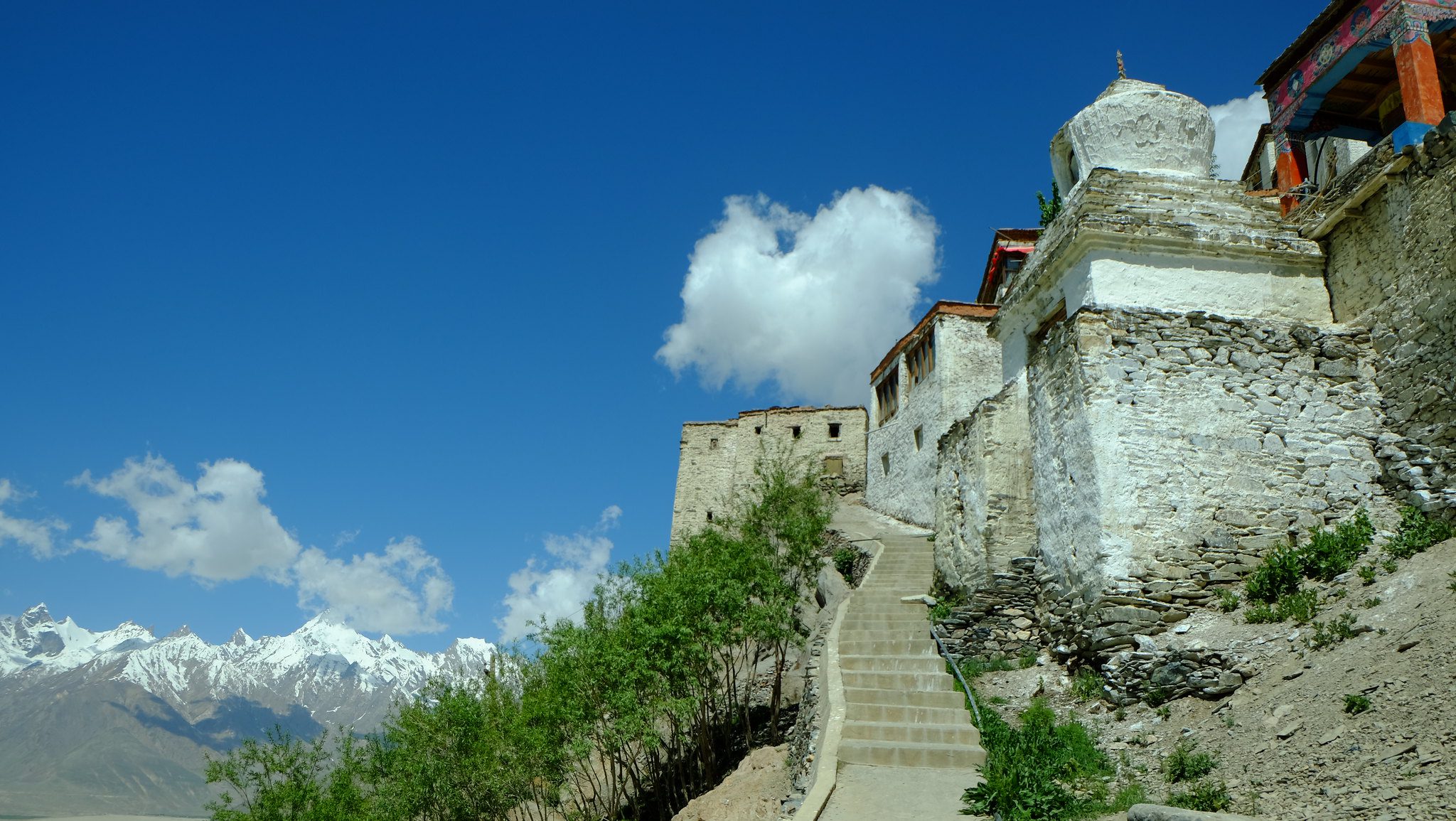
Another gem is Stongdey Monastery, the second-largest in Zanskar and one of the most visually dramatic. Sitting high above the Stod River, it offers incredible views and houses important statues, murals, and relics of the Gelugpa tradition. It’s a quieter site than Karsha and offers a more meditative atmosphere for visitors.
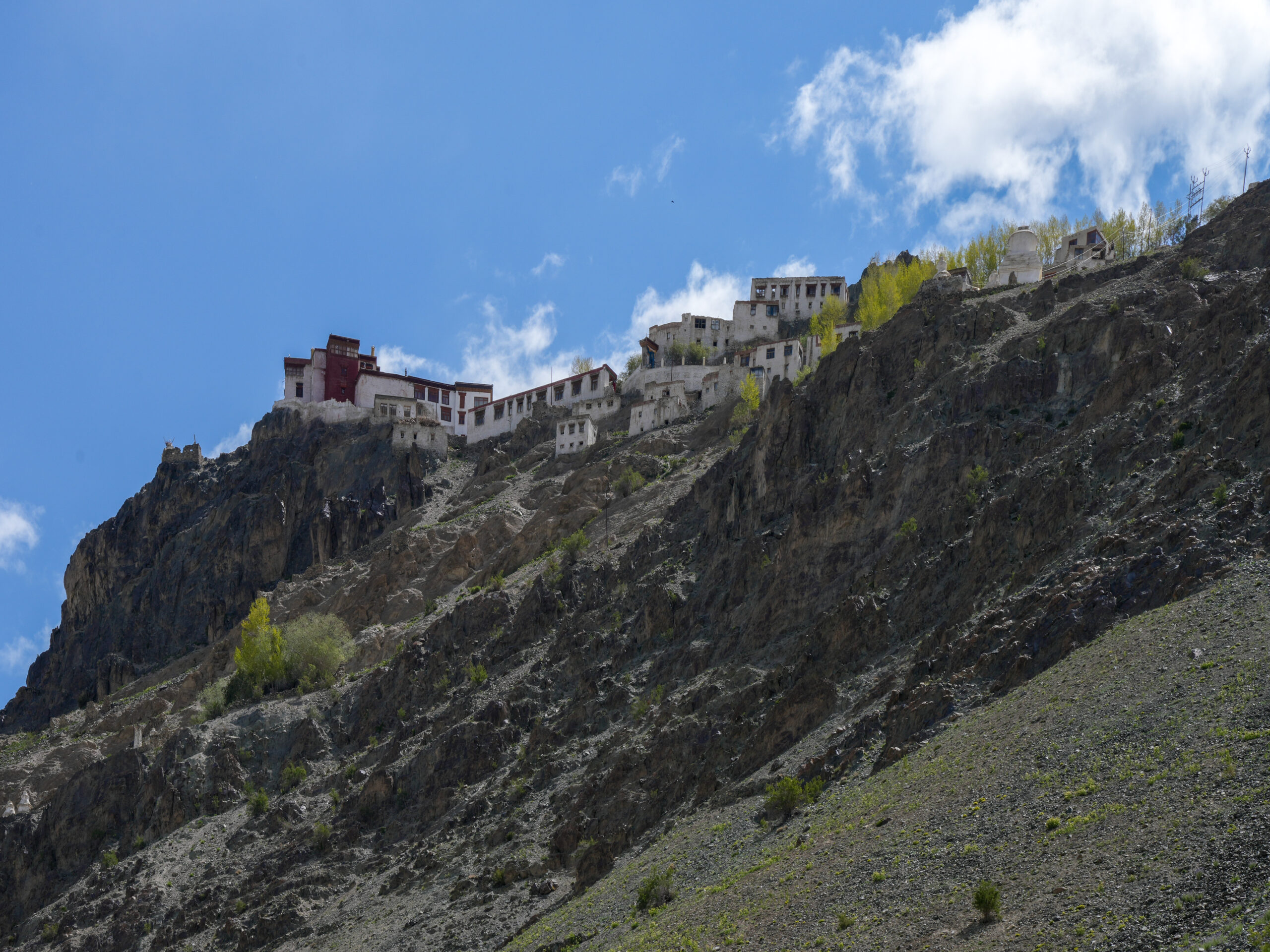
To the west of Padum, Sani Monastery is one of the few gompas located on flat ground. Unlike most that cling to cliffsides, Sani is built around a sacred chorten and is believed to have connections with the ancient Kushan emperor Kanishka. The site also includes a meditation cave linked to Padmasambhava, one of the founding masters of Tibetan Buddhism. Each year, it hosts the colorful Sani Naro-Nasjal Festival, celebrating the region’s deep spiritual heritage.
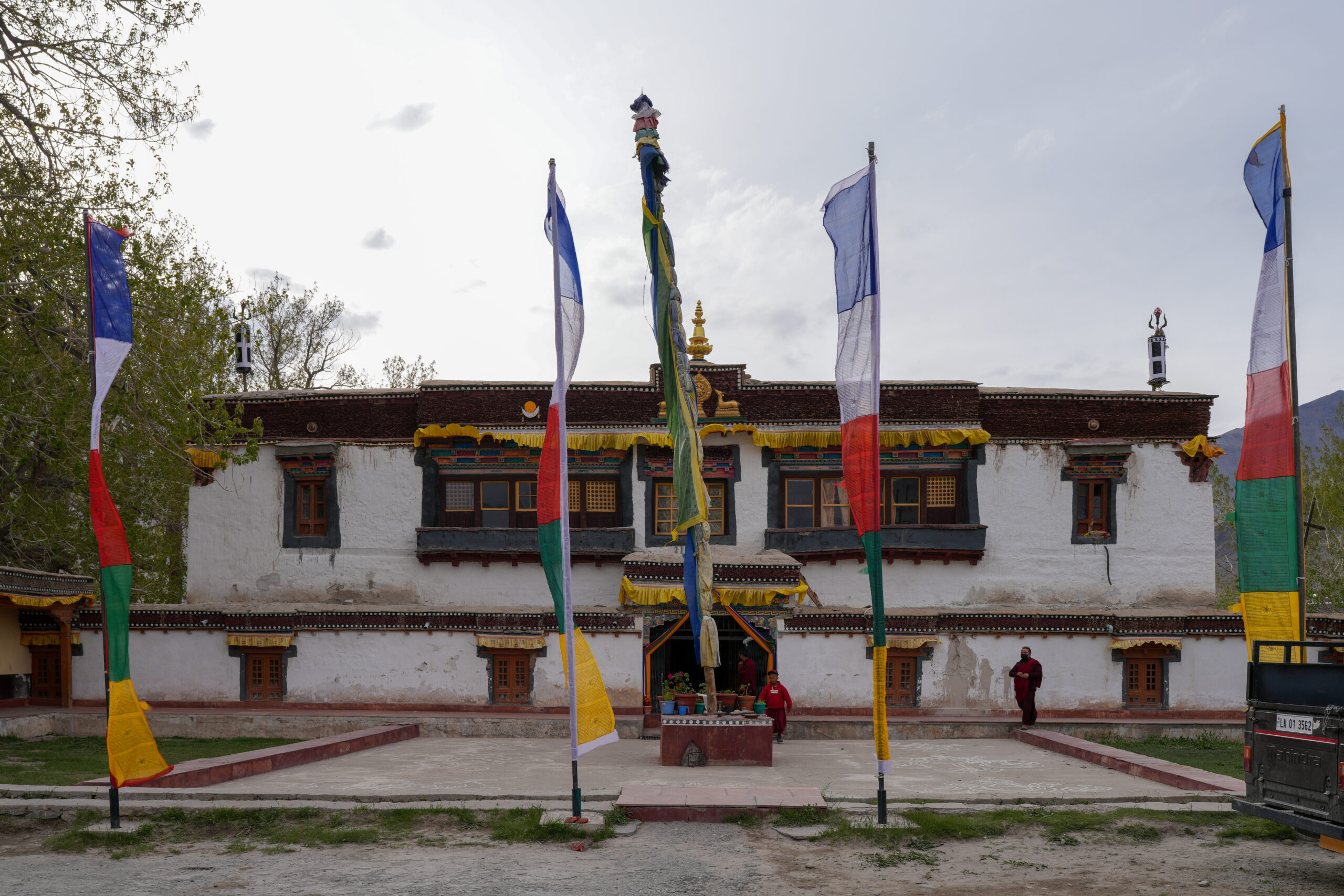
Other hidden monasteries dot the Zanskar landscape for those willing to venture further. Zongkhul Monastery, set dramatically into a rock face with cave shrines and ancient wall art, is a revered Drukpa Kagyu site.Bardan Monastery, a small but striking gompa built atop a crag overlooking the Lungnak Valley, belongs to the Dugpa-Kargyud order and is known for its peaceful solitude. Mune and Stakrimo Monasteries offer even deeper forays into untouched parts of Zanskar, far from the roads and crowds.
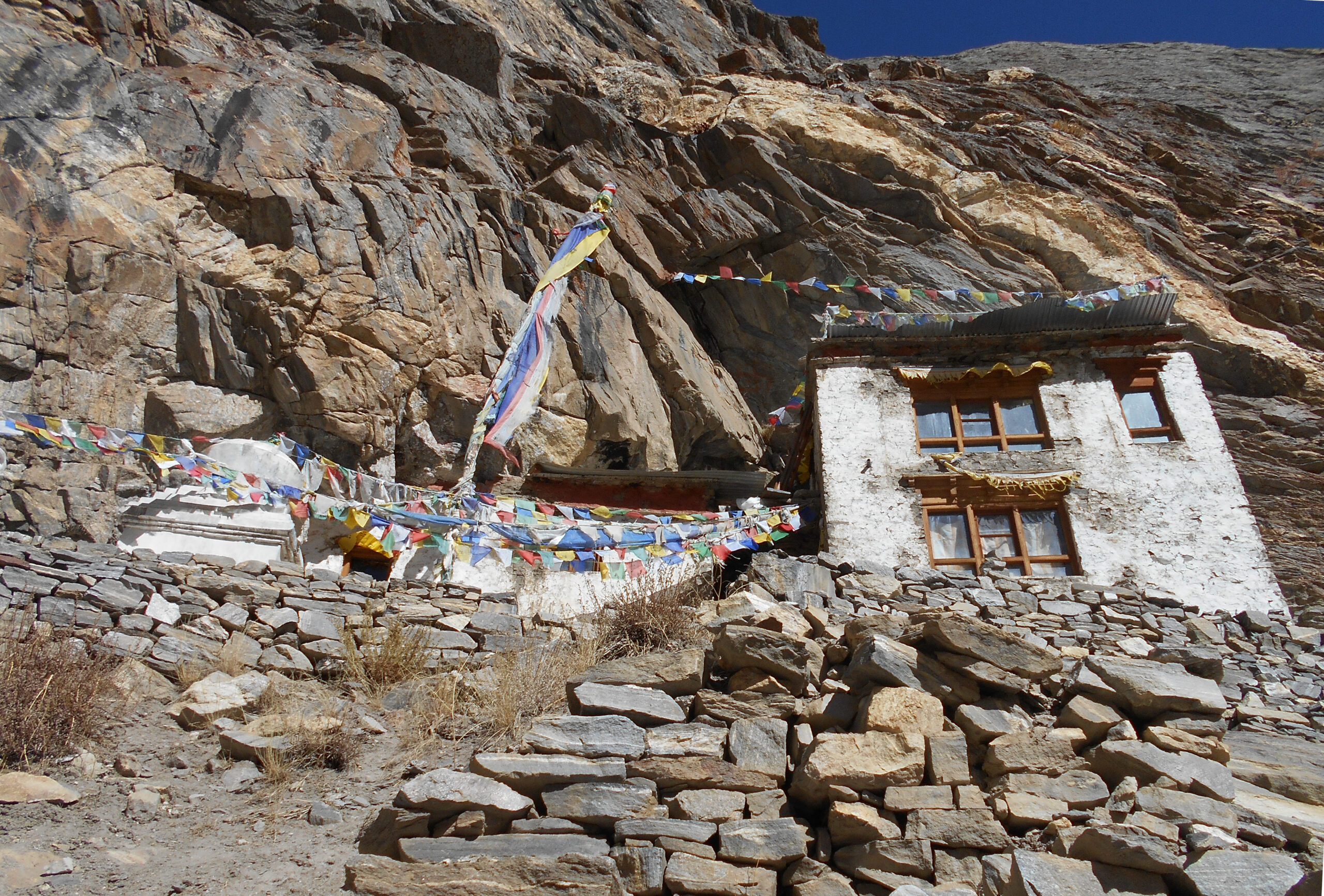
Visiting monasteries in Zanskar is not always easy — it requires patience, planning, and often days of travel. But for those who seek a deeper understanding of Himalayan Buddhism and a journey away from the modern world, Zanskar offers one of the last remaining frontiers of truly remote spirituality.
Monasteries in Changthang & Pangong Region
The Changthang Plateau, stretching across eastern Ladakh toward the Tibetan frontier, is a vast, hauntingly beautiful region of salt lakes, sweeping grasslands, and stark mountain ranges. This is a land where the sky seems wider, the silence deeper, and human footprints fewer. Often associated with nomadic communities and the windswept shores of Pangong Tso and Tso Moriri, Changthang is also home to a handful of remote, humble, and spiritually resonant monasteries that few travelers ever visit. These gompas offer not only sacred architecture but also a profound sense of isolation and peace — perfect for those seeking spiritual retreat in one of the world’s most remote landscapes.
The most prominent among these is Hanle Monastery, perched dramatically on a hilltop in the Hanle Valley, not far from India’s sensitive border with Tibet. Founded in the 17th century under the patronage of Sengge Namgyal, this gompa belongs to the Drukpa Kagyu school and continues to house a small community of monks. Hanle is unique not only for its tranquility but also for the nearby Indian Astronomical Observatory, one of the highest in the world. The combination of sacred silence and cosmic observation gives Hanle an almost otherworldly aura. Few places in Ladakh offer such a deep connection between heaven and earth.
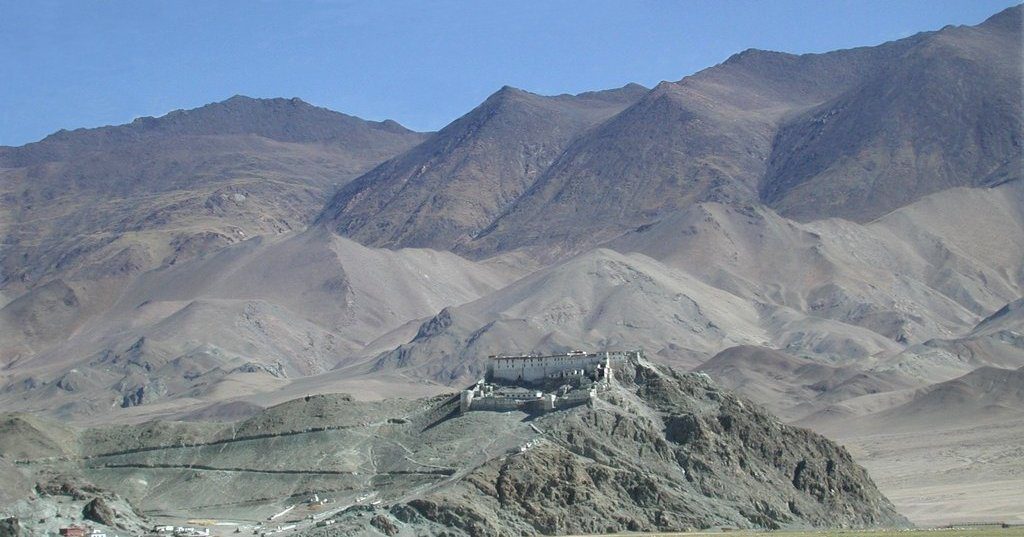
Travelers on the road toward Pangong Lake often pass through Durbuk and Tangtse, two villages that house smaller, lesser-known monasteries. The Tangtse Gompa, set against stark cliffs and colorful prayer flags, is a modest complex but offers beautiful views of the valley and a chance to interact with local monks. Its position along the historic trade route to Tibet imbues it with historical significance, even if its name remains obscure to many.

Further along, Chushul Monastery is a quiet spiritual outpost near the Line of Actual Control. While small in size, it plays an important role in local community life and reflects the enduring devotion of families living in these remote, high-altitude borderlands. Few tourists visit, making it an intimate stop for those who seek authenticity over grandeur.

In the Nyoma region — a windswept settlement with military outposts and dramatic scenery — there are a handful of hidden temples and village gompas. Nyoma Monastery itself is a simple but important place of worship. Nearby, Loma Gompa is tucked away among rocky ridges and offers a peaceful resting point for travelers on the long road toward Hanle or Tso Moriri.
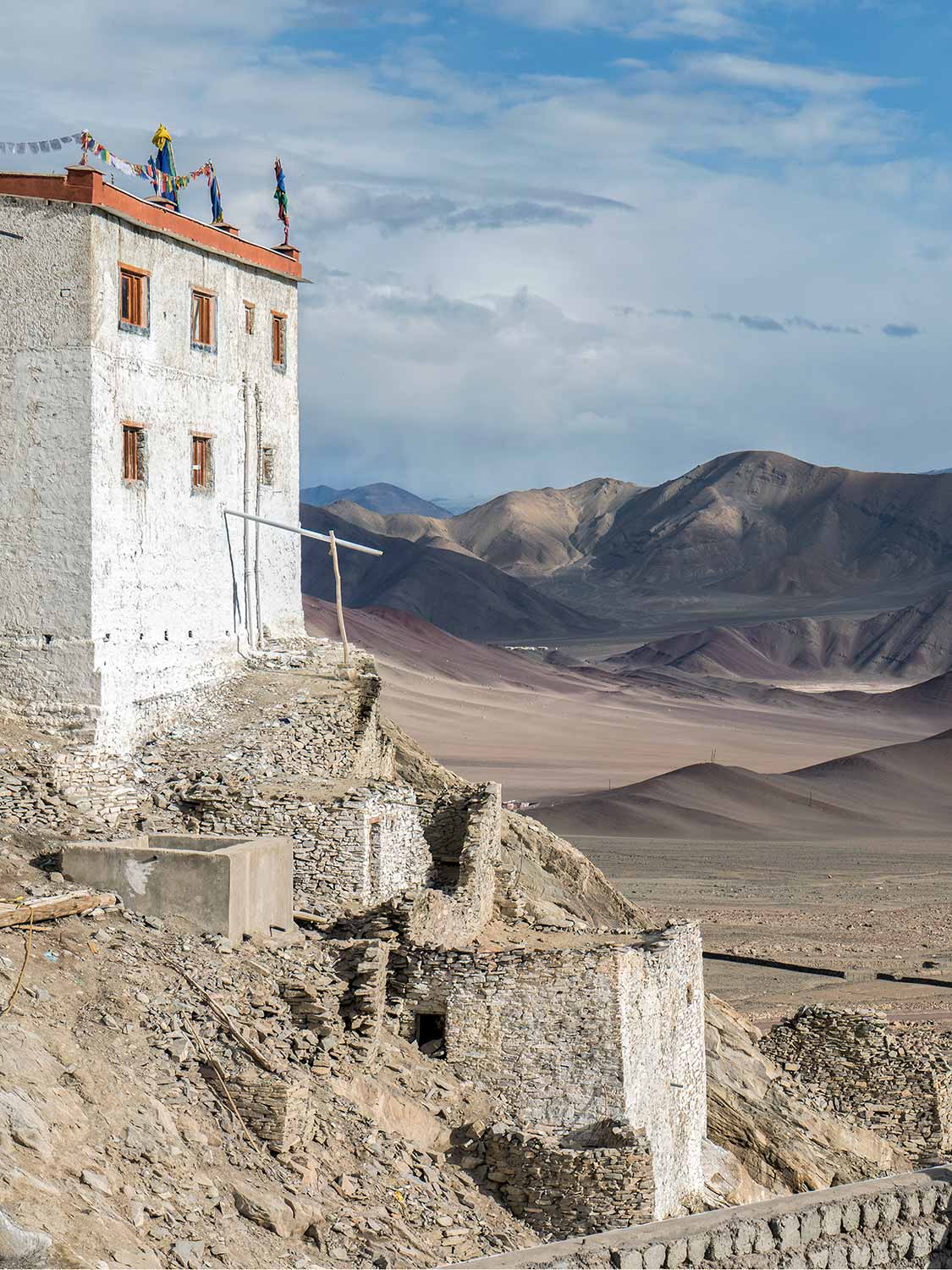
What sets these monasteries apart is not architectural splendor or historical fame — it is their sheer setting. Built on the edge of existence, where oxygen is thin and distances vast, these gompas serve as spiritual lighthouses for monks, nomads, and the few travelers who pass through. Their prayer flags flutter in winds unbroken by civilization, and their chants echo across valleys that may see no visitors for days.
The Changthang region is not for the hurried traveler. It demands patience, preparation, and respect for its remoteness. But for those who journey eastward, past the better-known sites, the monasteries of this land offer an unparalleled sense of quietude — the kind that whispers ancient truths beneath a cobalt sky.
Monasteries in Kargil & Suru Valley
Kargil may be known in headlines for its geopolitical position, but beneath the surface lies a deeply spiritual and culturally layered landscape. Located between Leh and the Kashmir Valley, the Kargil region is a crossroads where Tibetan Buddhism, Islam, and ancient Himalayan traditions converge. While the majority of Kargil’s population practices Islam today, the region preserves some of the most historically significant and visually striking Buddhist monasteries in western Ladakh. These gompas are fewer in number than those in Leh or Zanskar, but their presence is powerful — like echoes of a sacred past still whispering in the mountains.
One of the most accessible and impressive sites is Mulbekh Monastery, located along the Srinagar-Leh highway. Perched above the road on a rocky outcrop, the monastery is famous for its 9-meter-tall rock carving of Maitreya Buddha, believed to date back to the 7th or 8th century. The sculpture, etched directly into a cliff face, displays a unique blend of Gandhara and Tibetan artistic styles. The monastery nearby is small but active, and it provides breathtaking views over the Suru Valley, especially in the early morning light.
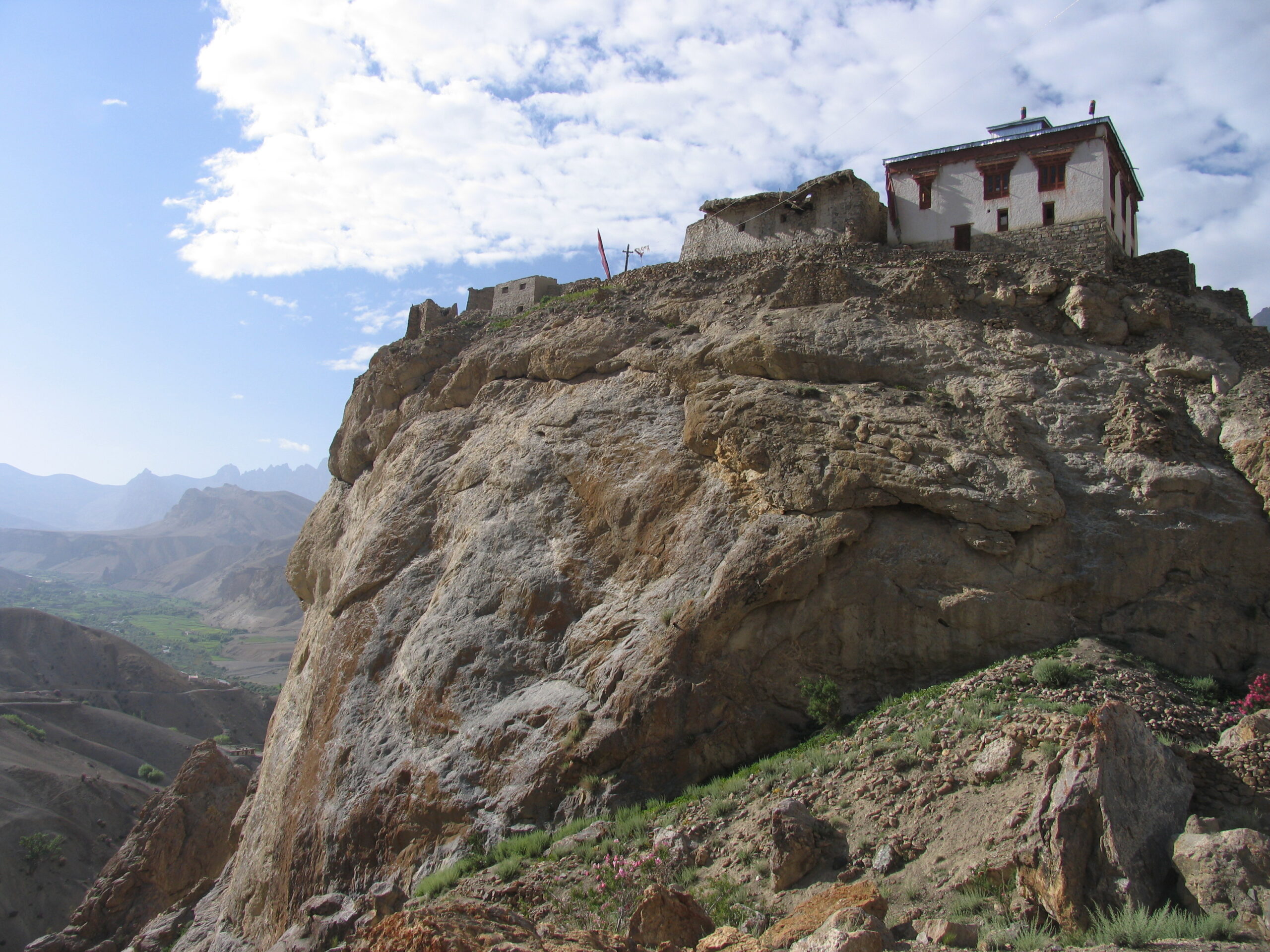
A short drive from Kargil town brings travelers to Shargole Monastery, a gem built into the face of a vertical cliff. Its remote location and dramatic setting make it one of the most photogenic and awe-inspiring monasteries in the region. The cave-like temple houses ancient murals and small statues, and the stillness here is so profound, it feels like the mountain itself is meditating.
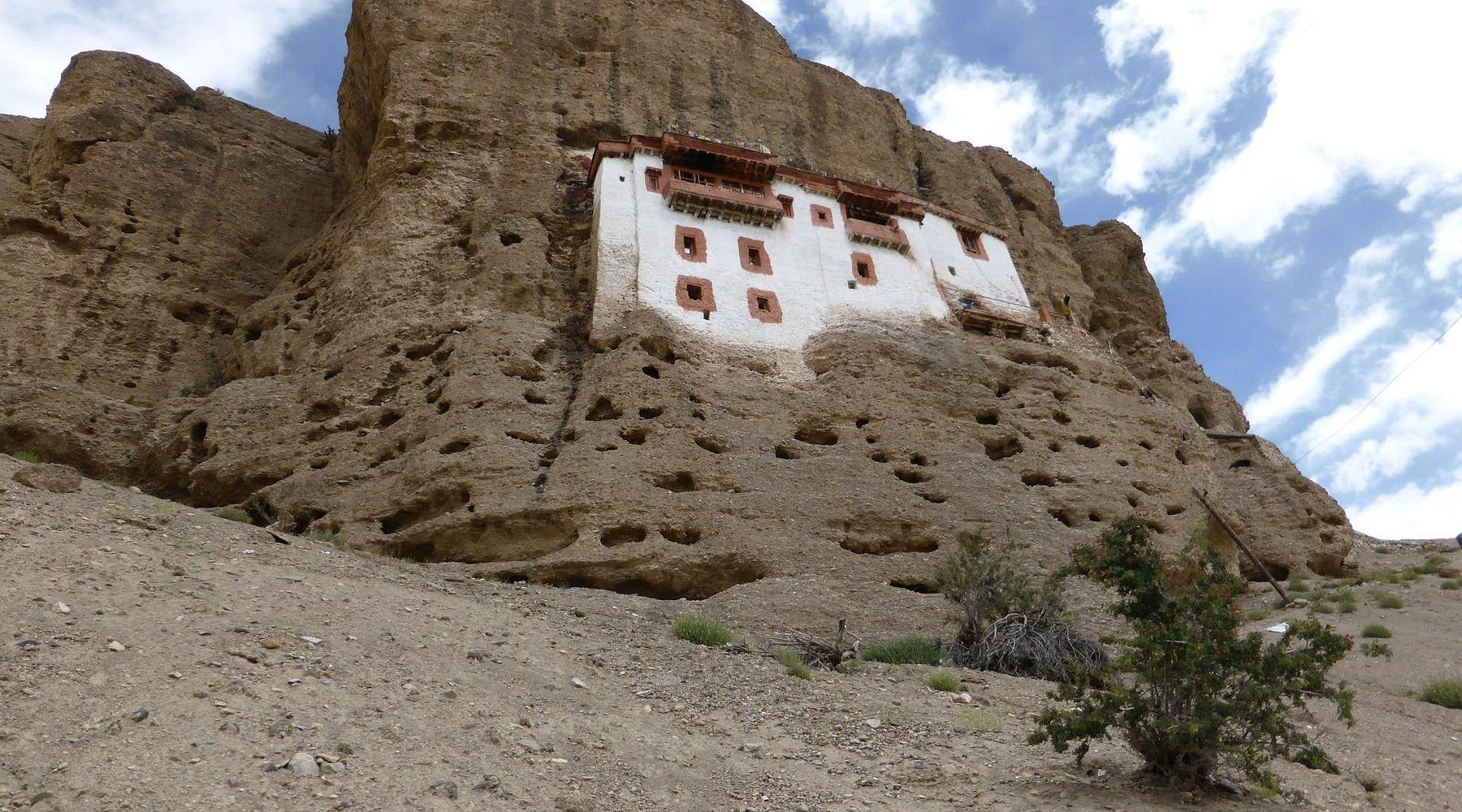
These cliffside sanctuaries in Wakha village , lies Rgyal Monastery — a beautiful example of how local villages continue to maintain Buddhist rituals and architecture amid changing demographics.
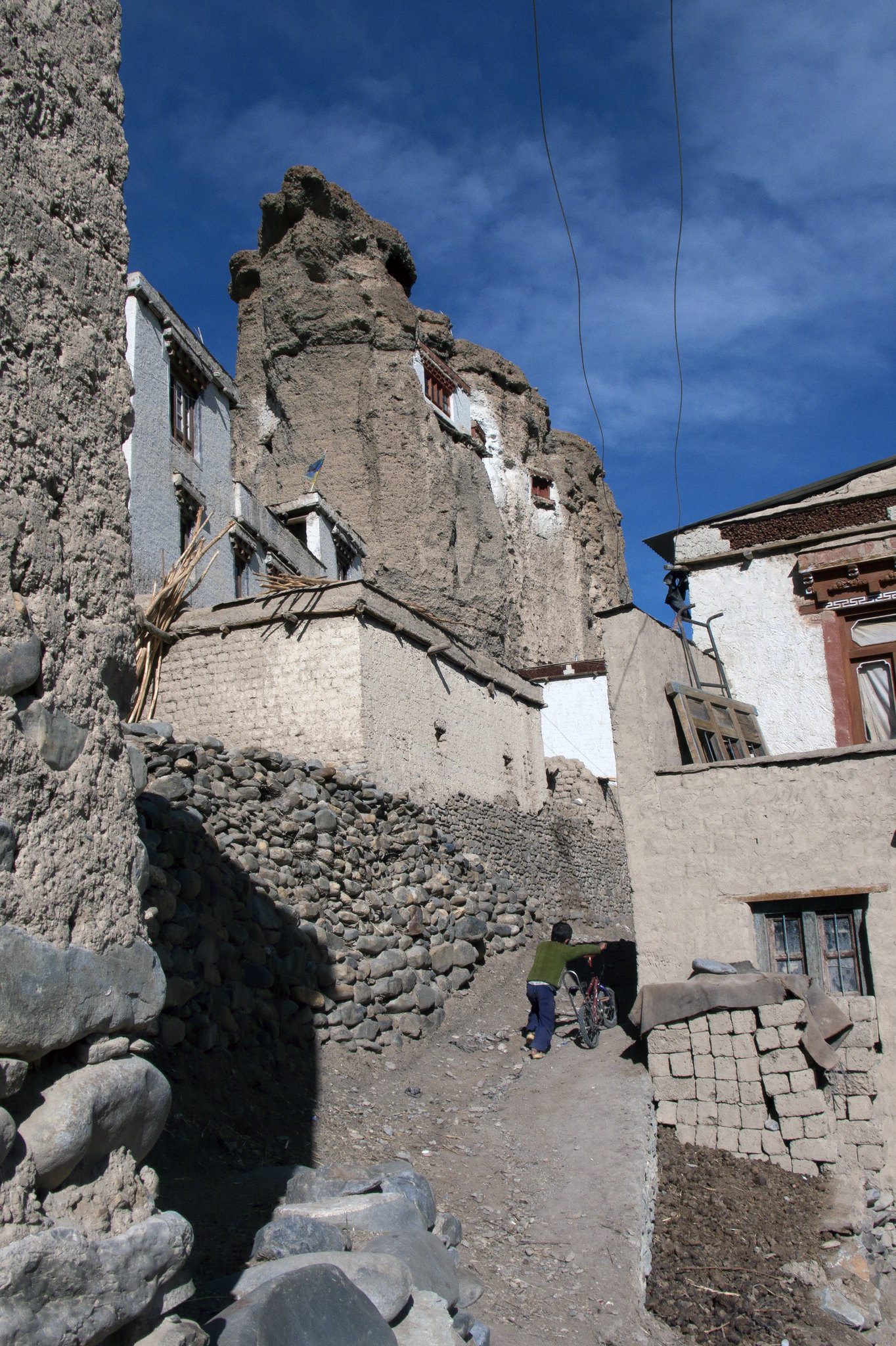
Another monastery worth noting is Sankoo Monastery, tucked inside one of the most picturesque parts of the Suru Valley. Here, traditional Buddhist festivals are still observed, and the local monks offer insight into the challenges and joys of maintaining sacred traditions in a Muslim-majority region.
Perhaps the most intriguing site in the area is Trespone Khanqah, an Islamic Sufi shrine with deep spiritual significance — and one of the rare places where Islamic and Buddhist spiritual lineages have coexisted for centuries. While not a Buddhist monastery in the strict sense, it represents the unique interfaith cultural tapestry of Kargil. Nearby Buddhist ruins and hidden stupas are a reminder of the layered heritage of this borderland.
For the adventurous, villages like Garkone and Darchik, home to the Brokpa or Dard communities, hold spiritual sites and traditions that predate Tibetan Buddhism, offering a rare look into animist and pre-Buddhist customs that still survive. These communities maintain small shrines and offer a different rhythm of sacred life in Ladakh’s western frontiers.
Exploring monasteries in Kargil and Suru Valley is about more than checking sites off a map. It is about rediscovering the forgotten chapters of Ladakh’s spiritual story — places where cultures meet, faiths intertwine, and the sacred endures quietly amid the flow of time and politics.
Rarely Visited & Remote Hermitages
Ladakh is a land of extremes — of elevation, silence, and stillness. While its better-known monasteries attract a steady stream of travelers, the true essence of Ladakh’s spiritual landscape lives quietly in its most remote corners, where hermitages cling to cliffsides and gompas hide behind mountain passes. These sacred spaces are rarely found in travel brochures or group itineraries, but they carry the deepest echoes of devotion. Visiting them requires effort, intention, and sometimes days of trekking — but for those who go, the reward is a kind of solitude and spiritual presence that modern life has all but forgotten.
Among the most remarkable is Wanla Monastery, located in a side valley off the main Lamayuru route. Though small in size, Wanla is one of the oldest surviving temples in Ladakh, dating back to the 11th century. It features a three-storeyed Avalokiteshvara temple and an upper chamber used for deep meditation. With few visitors and a timeless setting, Wanla is ideal for travelers seeking quiet reflection and a taste of Ladakh’s medieval Buddhist architecture.
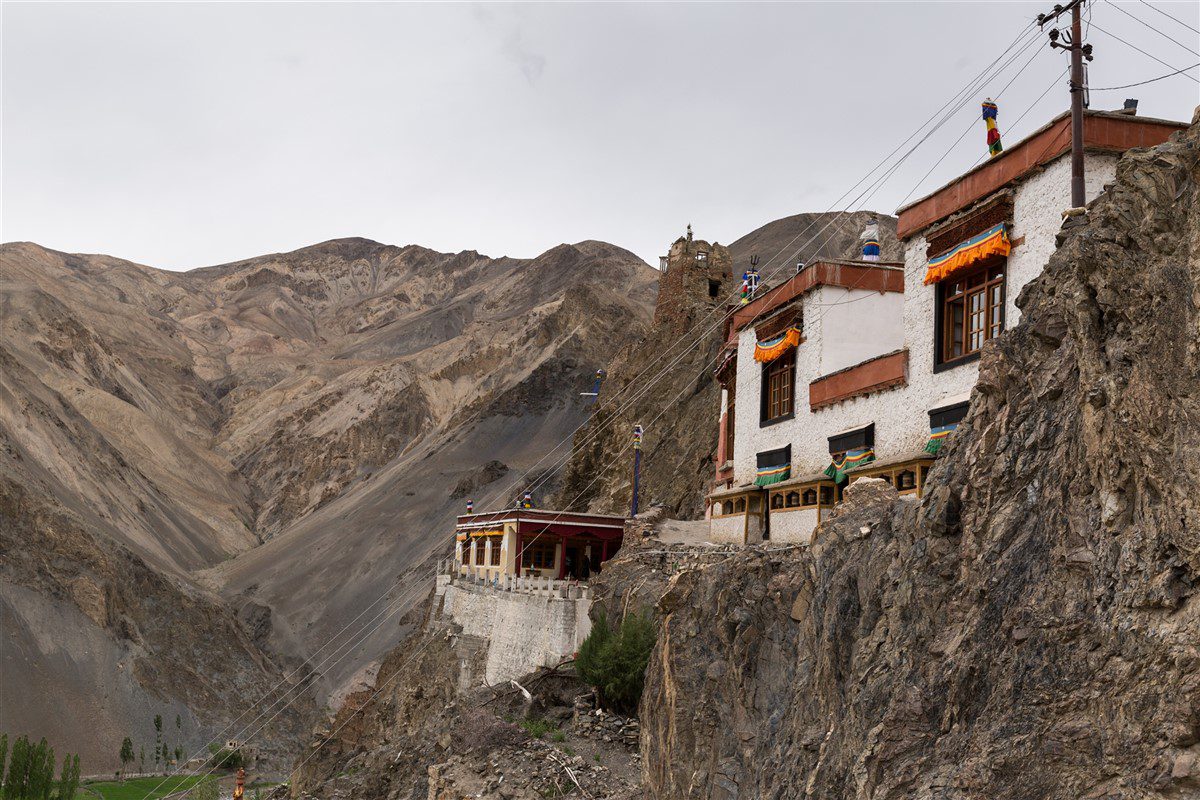
Far more isolated is Umla Monastery, located near Lingshed, accessible only via trekking routes that connect the Zanskar range with Sham Valley. Built into the cliffs, Umla is home to just a handful of monks, most of whom spend months in silent retreat. The trek to reach it is physically demanding, but the reward is absolute stillness — broken only by wind and the sound of spinning prayer wheels.
For those walking the Markha Valley trek, Skyu Monastery offers a quiet detour. Nestled in the village of Skyu, it is an unassuming shrine with a powerful presence, often missed by trekkers moving quickly toward Nimaling. Its peaceful grounds, barley fields, and gentle chanting monks make it a soulful rest stop in the heart of the mountains.
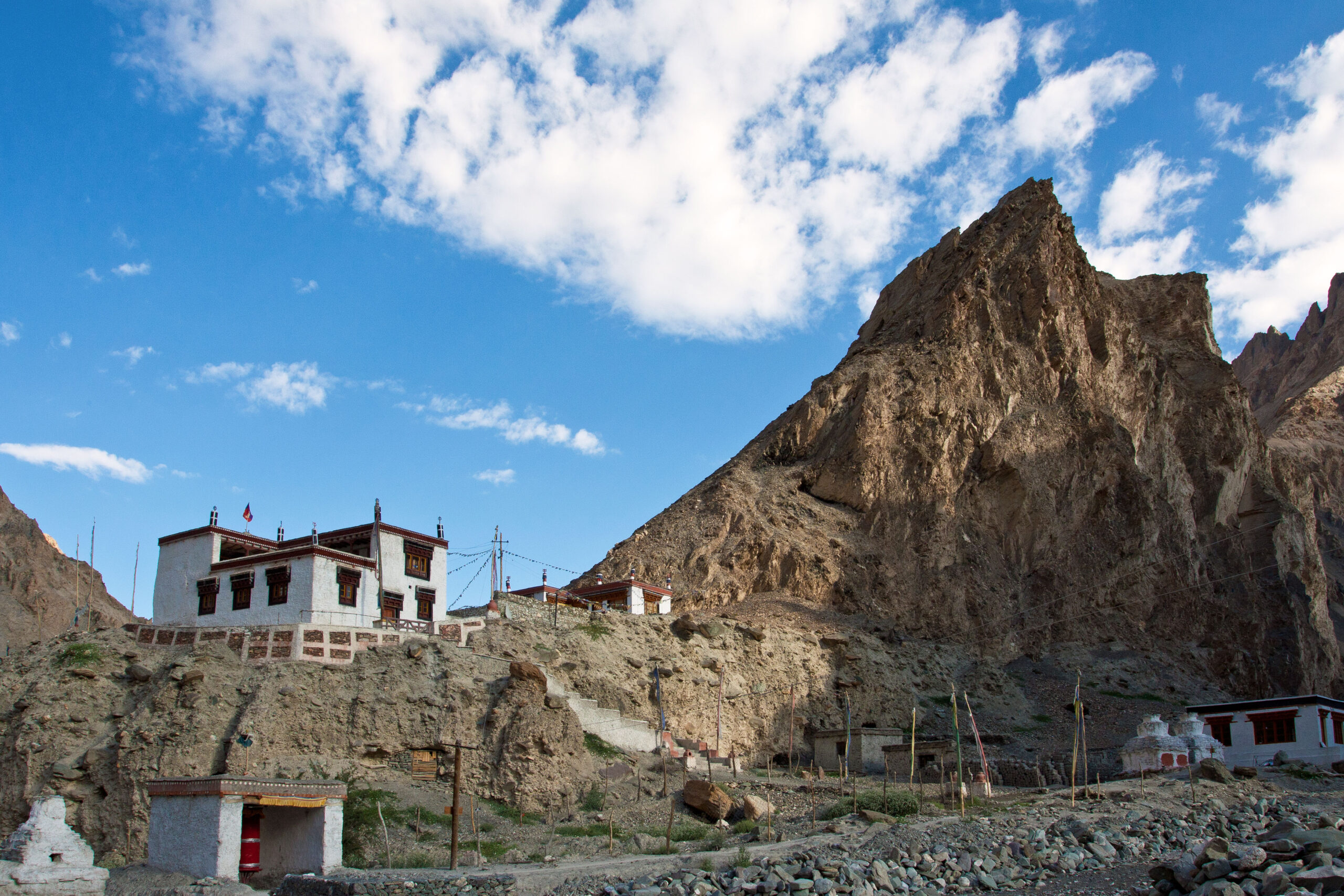
In remote corners of Nubra, you’ll find Yarma Gonbo Monastery, hidden near the thermal springs of Panamik. This rarely-visited temple is revered by locals but almost unknown to outsiders. Similarly, near the ancient trade route to Baltistan lies Chulichan Nunnery, one of the few active nunneries in Ladakh. Tied to Rizong Monastery, it provides rare insight into the lives of female monastics, and its gentle rhythm of practice stands in contrast to the more public rituals of larger gompas.
To the south, beyond the open plains of Rupshu and Changthang, lies the ethereal Yulchung Monastery — a little-known spiritual site associated with ancient pilgrim routes. Accessible only by determined trekking, its mud-brick walls and weather-worn stupas seem to rise out of the earth itself. It is a monastery not defined by architecture but by energy: raw, ancestral, and echoing with the quiet prayers of centuries.
Each of these hermitages is a whisper in a world of noise. They are sanctuaries of introspection, simplicity, and continuity. They are not for tourists — they are for seekers. To reach them is to understand the deeper heartbeat of Ladakh, where the divine lives not in monuments but in the wind, the silence, and the steady flame of a butter lamp in a cave.
Festivals, Meditation, and Monastic Life
Beyond stone walls and prayer wheels, the monasteries of Ladakh are living, breathing ecosystems of spiritual discipline, artistic expression, and cultural celebration. Their lifeblood flows through seasonal festivals, daily rituals, and lifelong practices of meditation and service. For the traveler, engaging with this monastic rhythm offers something far greater than sightseeing — it is a chance to witness devotion in motion, and, for a moment, become part of a sacred continuum.
One of the most striking expressions of Ladakh’s Buddhist identity is the Cham dance festival — a sacred masked performance held annually in major monasteries such as Hemis, Thiksey, Phyang, and Matho. These multi-day events are not entertainment but ritual: each mask, each movement, each drumbeat carries symbolic power. The dancers, often monks in trance-like states, represent wrathful deities, protectors, and enlightened beings. They swirl and stomp across courtyards in vibrant robes, invoking spiritual cleansing for both the monastery and the community. The most famous is the Hemis Tsechu, celebrated in June or July, which draws thousands of locals and visitors alike for its spectacle, spiritual gravity, and joyous gathering.
In contrast to the dynamic energy of festivals, Ladakh’s monasteries also offer profound silence. Many, especially remote ones like Rizong, Phugtal, and Umla, support long-term meditation retreats for monks and, in some cases, serious lay practitioners. These retreats can last weeks, months, or even years, during which participants remain in silence, focusing on tantric practices, visualization, or breath-based meditations rooted in the Vajrayana tradition. The daily routine is rigorous, with multiple sessions of chanting, study, and physical postures — all aimed at cultivating awareness and compassion.
For short-term visitors seeking stillness, a growing number of monasteries now offer introductory meditation sessions and spiritual stays. Gompas such as Thiksey, Likir, and Hemis may allow guests to attend early morning prayers — an unforgettable experience marked by the echo of long horns, the rhythm of chanting, and the scent of juniper incense. A few monasteries even offer basic accommodation in separate guest rooms, allowing travelers to immerse themselves in the monastic environment without intruding on its discipline.
Life inside the monastery flows in cycles — sunrise pujas, communal meals, philosophical debates, scripture recitations, and seasonal tasks like preparing butter lamps or restoring murals. Young novices, some as young as six, study Tibetan language, Buddhist philosophy, and ritual arts. Older monks serve as teachers, healers, and caretakers of the gompa’s spiritual and physical heritage. The monastic life is not passive retreat, but active dedication — a living example of stability and simplicity in a transient world.
Visitors are encouraged to approach these experiences with humility and curiosity. Dress modestly, remain silent during ceremonies, and always ask permission before taking photos. Donations, offered quietly and respectfully, help support the monasteries’ daily upkeep and educational missions.
Whether you come for a colorful festival or a quiet sunrise prayer, the monastic life of Ladakh offers more than moments of beauty — it offers a mirror. In the calm discipline of a monk or the swirl of a masked dance, you may find unexpected clarity, connection, and peace. These aren’t performances or shows; they are glimpses into a way of life built on devotion, resilience, and a profound belief in the power of the present moment.
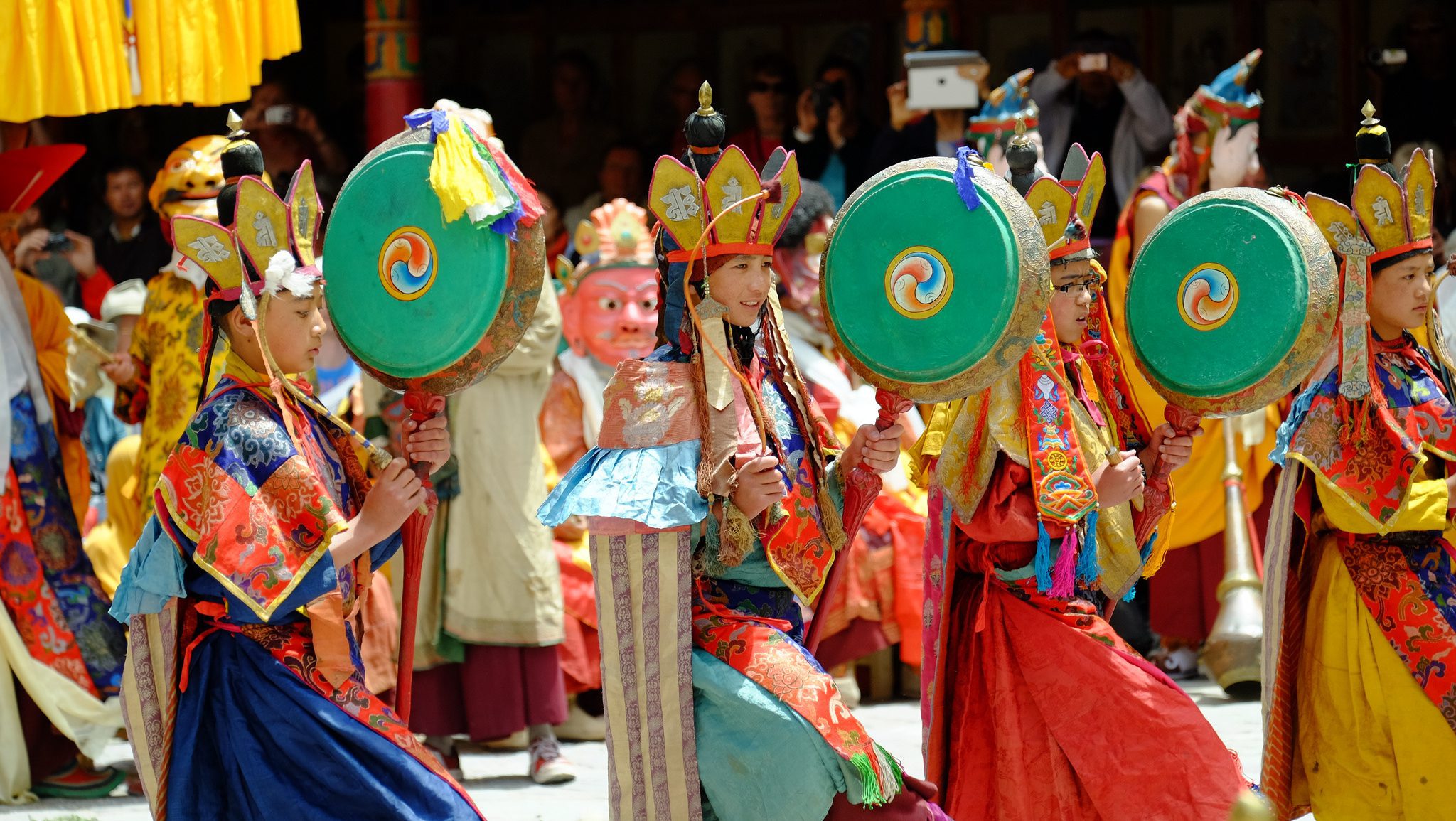
Travel Tips, Best Time, and Responsible Travel
Visiting Ladakh’s monasteries is not like visiting ordinary tourist sites. These are sacred places, living homes to monks, nuns, and centuries-old spiritual traditions. Whether you’re arriving for a festival, a morning prayer session, or a meditative walk among stupas, approaching Ladakh’s gompas with mindfulness, preparation, and respect will deepen your experience — and ensure that your presence supports rather than disrupts local life.
Best Time to Visit Monasteries in Ladakh:
The ideal season for monastery exploration runs from May to mid-October, when mountain roads are open, skies are mostly clear, and festivals are in full swing. June and July are peak months for festivals like Hemis Tsechu, while September offers fewer crowds and golden post-monsoon light. In winter (November to March), most high-altitude gompas remain inaccessible due to snow, but some monasteries around Leh stay open and offer quiet, intimate experiences — ideal for photographers and spiritual seekers who don’t mind the cold.
How to Dress and Behave in Monasteries:
Always dress modestly — long pants, covered shoulders, and closed shoes are preferred. Remove your hat and sunglasses when entering temple halls, and leave your shoes at the entrance. Speak softly, avoid touching sacred items or murals, and never point your feet toward the altar. If a prayer is in session, sit quietly or observe from the back. Monks may be open to conversation, but always greet with a respectful “Julley” and let them initiate dialogue.
Photography Guidelines:
Photography is usually allowed in outdoor spaces and courtyards, but always ask before taking photos of monks, rituals, or the inside of prayer halls. Many monasteries prohibit interior photography, especially in ancient temples where light and flashes can damage fragile artwork. A polite smile and a gesture toward your camera will usually clarify what’s permitted.
Donations and Offerings:
A small cash donation is customary, even when there’s no formal entry fee. This supports the maintenance of the monastery and the daily needs of its residents. Some travelers also bring butter, incense, or candles to offer at shrines — these small gestures are appreciated, but always check with the caretaker first.
Getting There and Around:
Most monasteries near Leh — such as Thiksey, Shey, and Spituk — are accessible by car or bike and can be visited in a single day. For remote gompas like Phugtal, Sumda Chun, or Hanle, be prepared for multi-day travel, limited infrastructure, and changing road conditions. Hiring local drivers and guides not only enhances your journey with insight and stories but also supports the regional economy.
Supporting Responsible Tourism:
Ladakh’s fragile environment and spiritual culture deserve thoughtful travel. Choose locally-run guesthouses or homestays when possible. Avoid littering and carry reusable bottles and bags. Refrain from flying drones near monasteries unless you have explicit permission. Learn a few words in Ladakhi or Tibetan — even a simple “Julley” can go a long way in bridging cultures.
Altitude Awareness:
Most monasteries sit at elevations between 3,000 and 4,500 meters. Acclimatize properly in Leh before heading to higher gompas, especially those in Nubra, Zanskar, or Changthang. Drink water, move slowly, and recognize signs of altitude sickness. If needed, consult local doctors or descend to a lower altitude.
By traveling with sensitivity and awareness, you become more than a visitor — you become a respectful participant in the living story of Ladakh. Let your footsteps be gentle, your gaze reverent, and your heart open. That is the true way to walk among the monasteries of this sacred land.
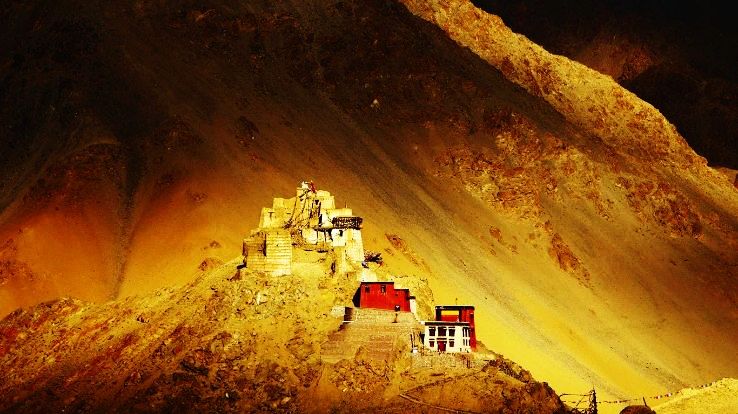
FAQ: Monasteries in Ladakh
How many monasteries are there in Ladakh?
There are over 200 monasteries and gompas spread across Ladakh, ranging from large, well-known complexes like Hemis and Thiksey to small, cliffside hermitages and nunnery retreats. Many villages have their own modest temples or shrines, making monasteries a deeply integrated part of the Ladakhi cultural and spiritual landscape.
Which are the most famous monasteries in Ladakh?
Some of the most famous monasteries include Hemis Monastery (the largest and richest), Thiksey Monastery (known for its Maitreya Buddha statue), Alchi Monastery (famed for ancient murals), Diskit Monastery (with its towering Buddha overlooking Nubra Valley), and Phugtal Monastery (a remote cliff-carved gompa in Zanskar).
Can tourists stay in monasteries in Ladakh?
Yes, a few monasteries offer basic accommodation for visitors, usually in the form of guest rooms near or within the gompa complex. Popular options include Thiksey, Hemis, and Lamayuru. Remote monasteries may host long-term meditators with prior arrangement. Conditions are simple — expect shared toilets, vegetarian meals, and early wake-up calls for prayers.
Are monastery visits in Ladakh free?
Most monasteries welcome visitors with a small entrance fee (usually INR 20–100), which goes toward maintenance and monastic education. Some remote or lesser-known monasteries may not charge at all, but donations are always appreciated.
When is the best time to attend monastery festivals in Ladakh?
The most vibrant monastery festivals, such as the Hemis Tsechu, occur between June and August. Matho, Spituk, and Stok hold winter festivals in February and March. Dates vary by the Tibetan lunar calendar, so it’s best to confirm with the Ladakh Tourism Department before planning your trip.
What is the difference between a gompa and a monastery?
In Ladakh, the terms “gompa” and “monastery” are used interchangeably. “Gompa” is a Tibetan word meaning “remote place” or “meditation center,” while “monastery” is the English equivalent. Both refer to spiritual centers housing monks or nuns, prayer halls, and sacred relics.
Can women visit all monasteries in Ladakh?
Yes, women are generally welcome in all Ladakhi monasteries, though certain areas like inner sanctums or ritual chambers may be restricted during specific ceremonies. Dress modestly and follow local customs. Female travelers interested in learning about nuns can visit Chulichan Nunnery or ask about visiting nunneries connected to major gompas.
Do I need special permits to visit monasteries in Ladakh?
Most monasteries are accessible without special permits. However, gompas located near international borders — such as in Nubra Valley, Hanle, or Pangong regions — require an Inner Line Permit (ILP), which can be easily arranged in Leh through travel agents or online. Always carry a printed copy while traveling.
Are children allowed in monasteries?
Absolutely. Children are welcome, and many monasteries enjoy interacting with respectful young visitors. Some gompas even have schools for novice monks. Just make sure children are calm and quiet during prayer sessions, and avoid bringing food, loud toys, or distractions into temple halls.
Can I volunteer or study in a monastery?
Yes, though opportunities are limited and require advance planning. Some monasteries, especially in Leh or Zanskar, offer programs in teaching English or helping with maintenance. For spiritual study, extended meditation stays can be arranged in places like Phugtal or Rizong, often with the help of a guide or cultural liaison.


